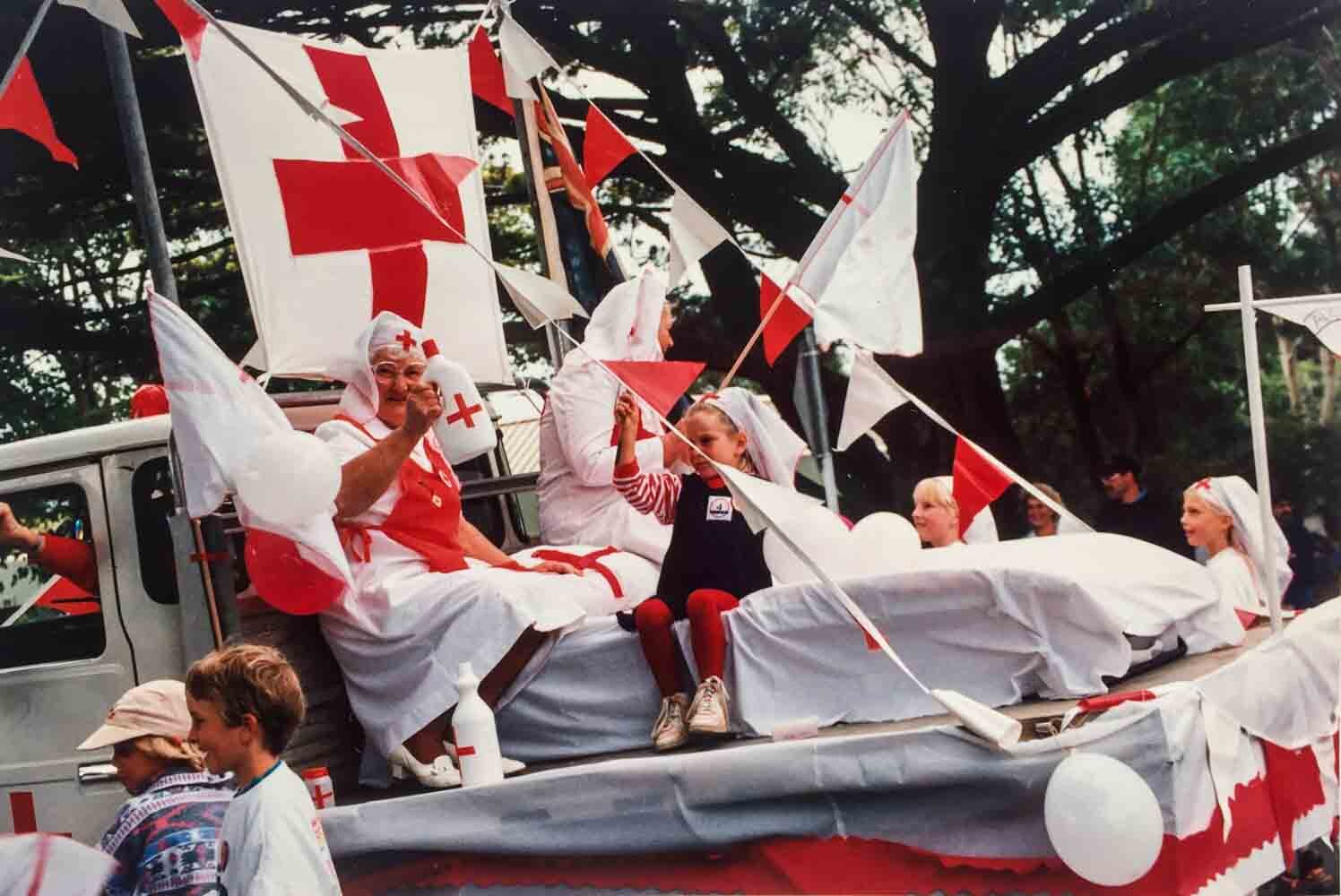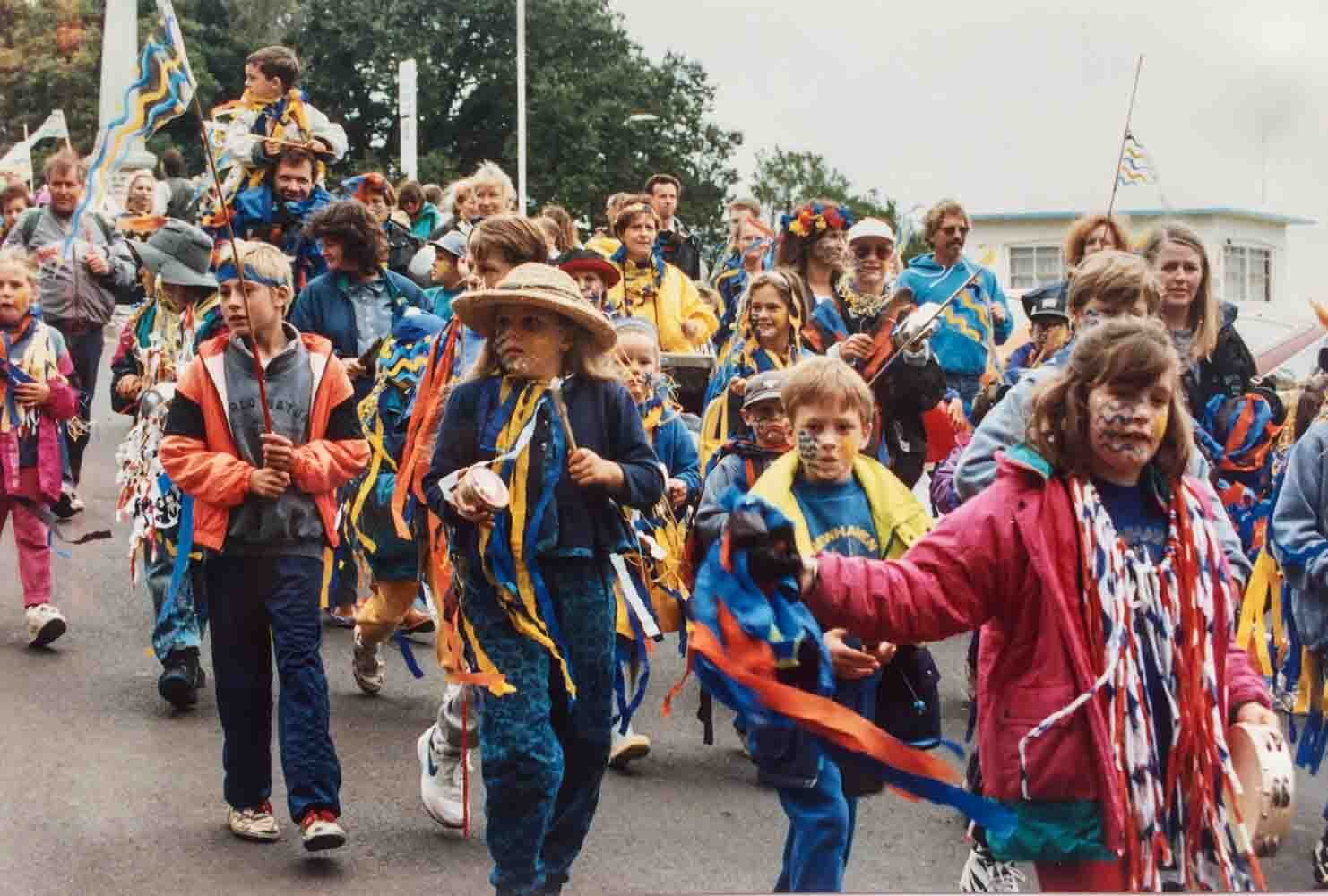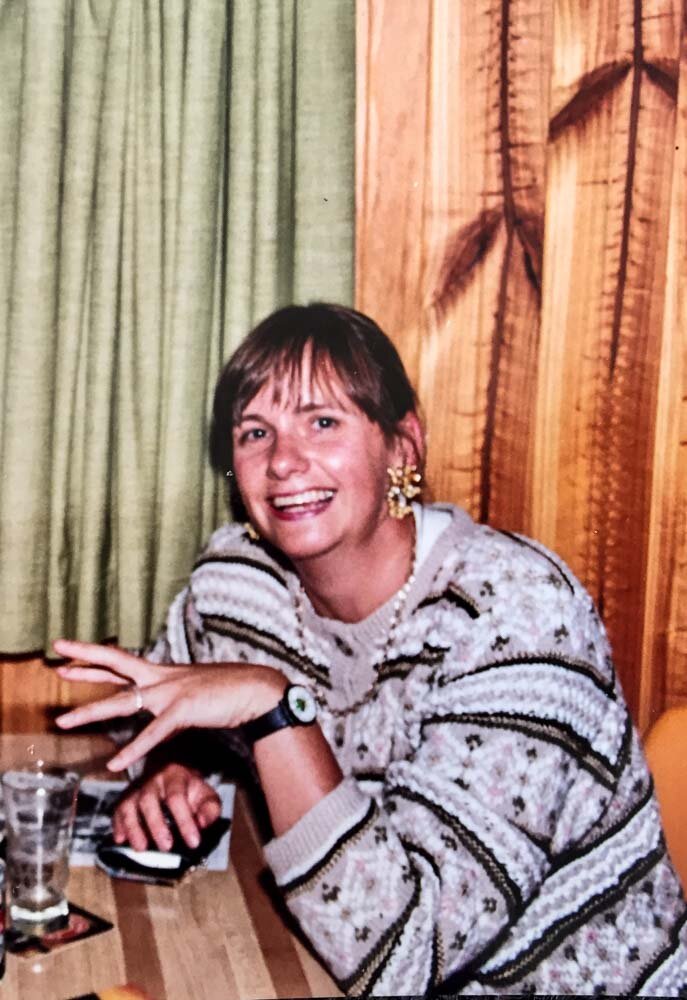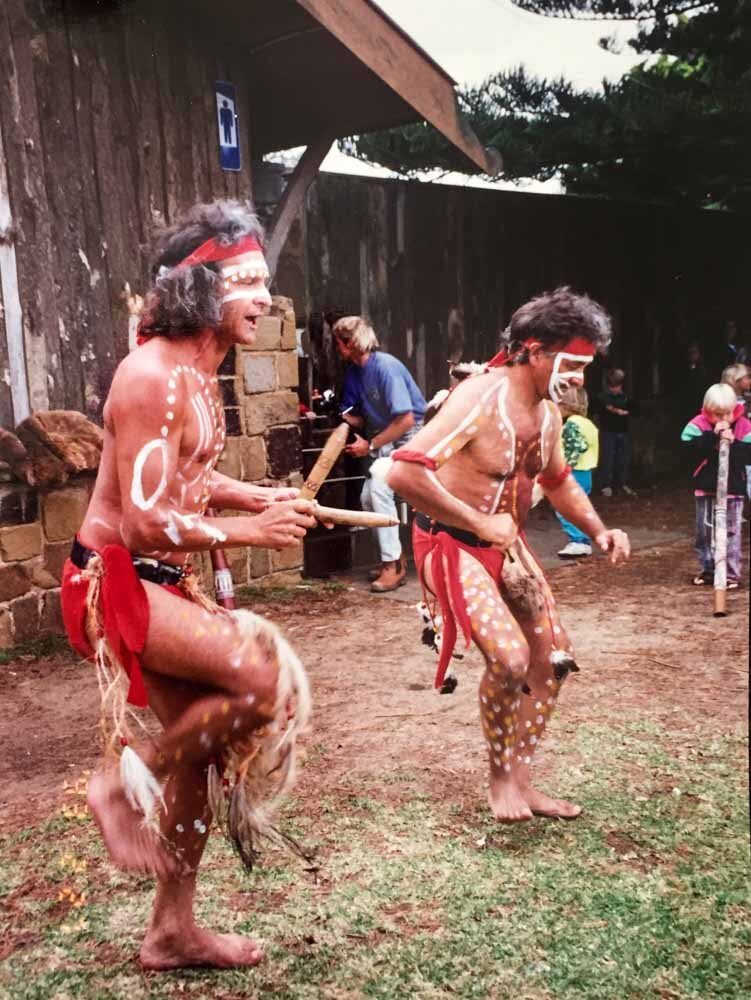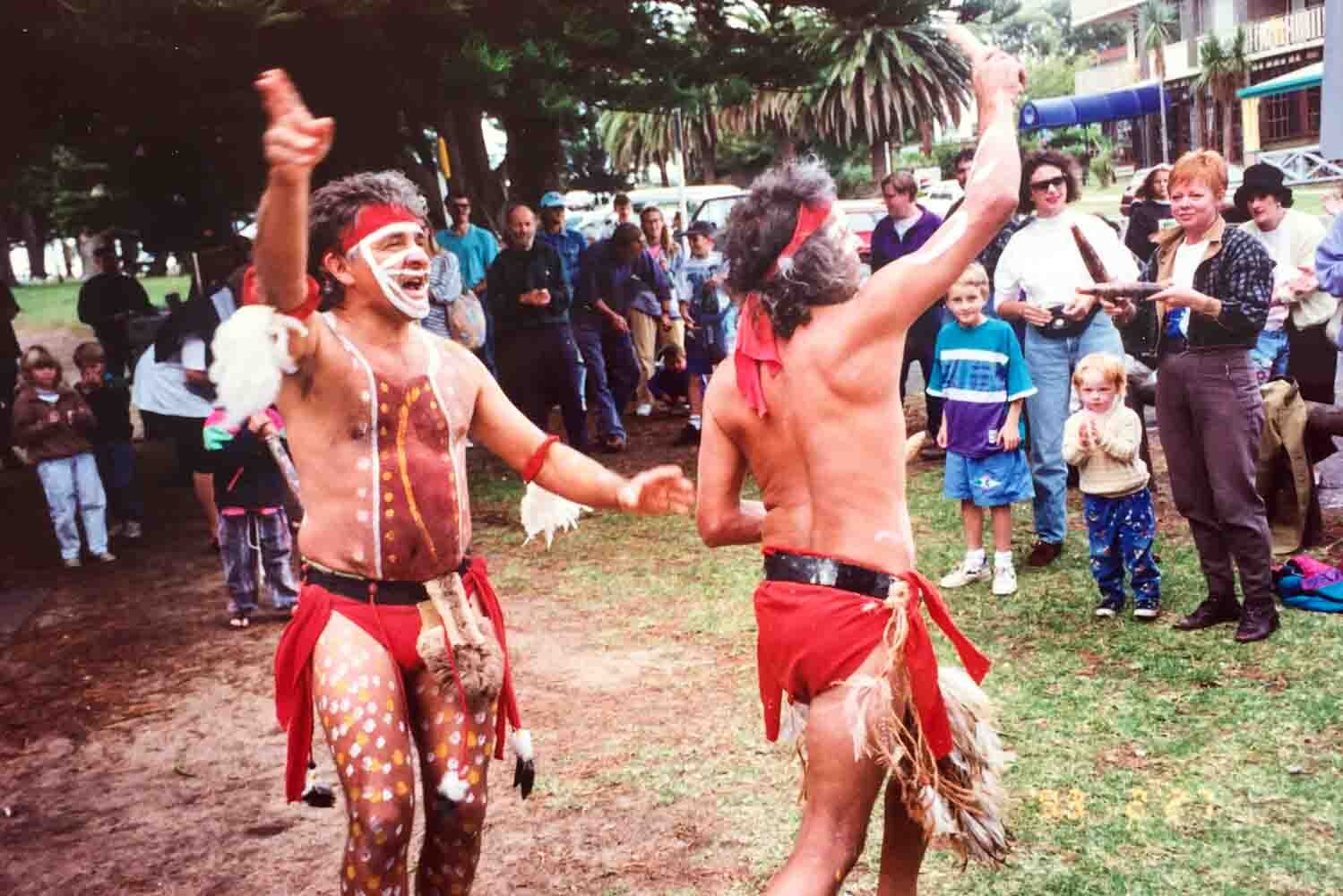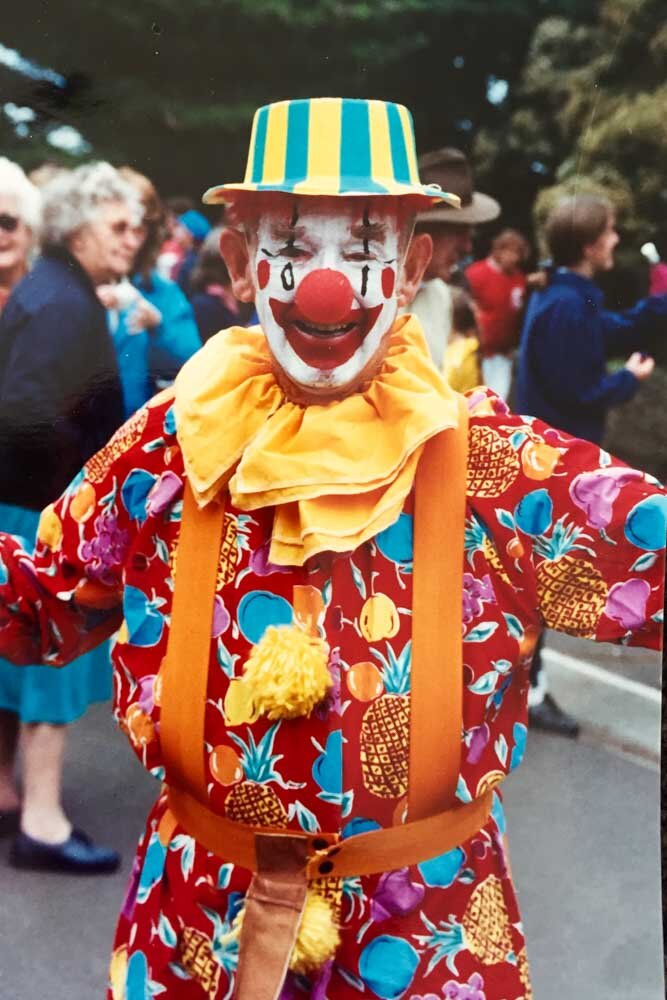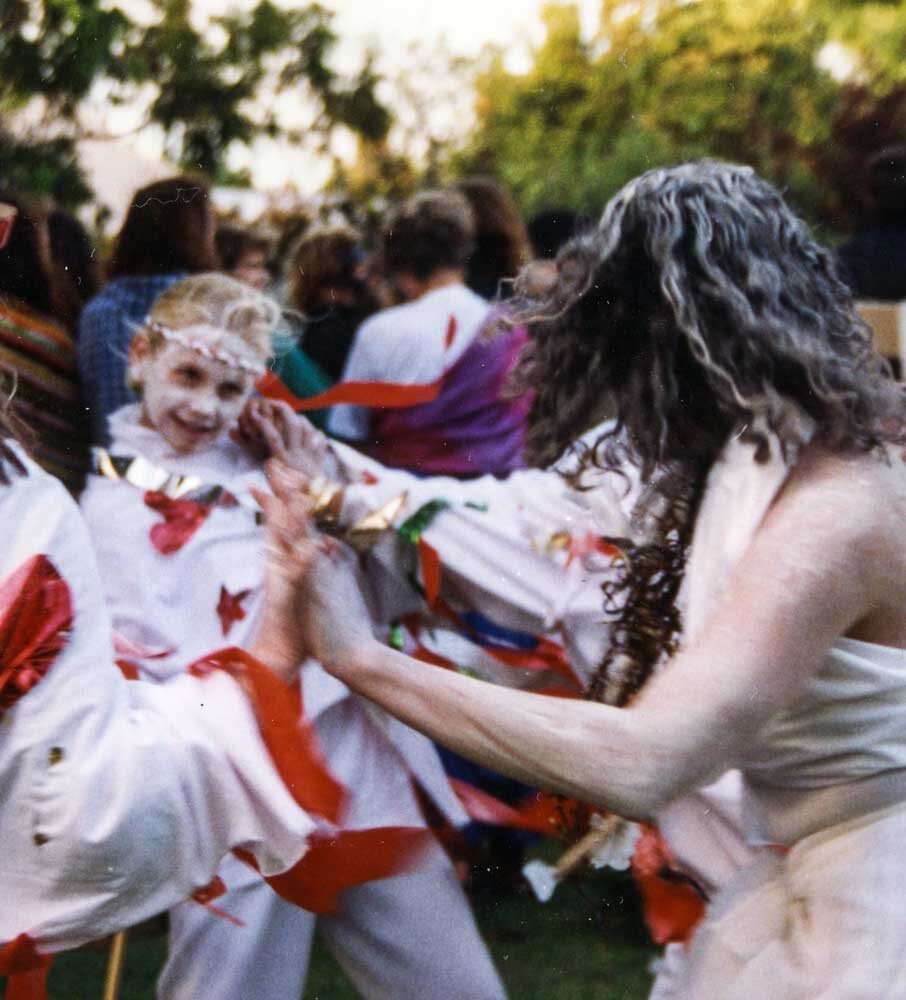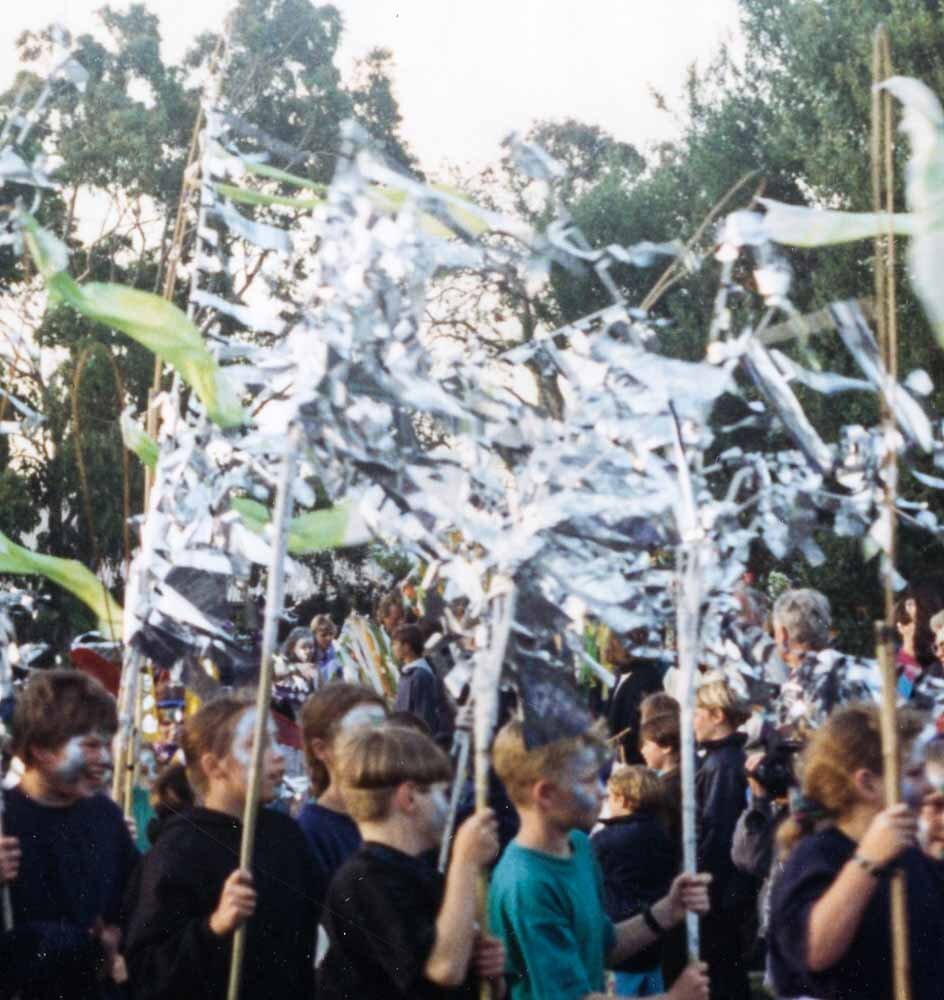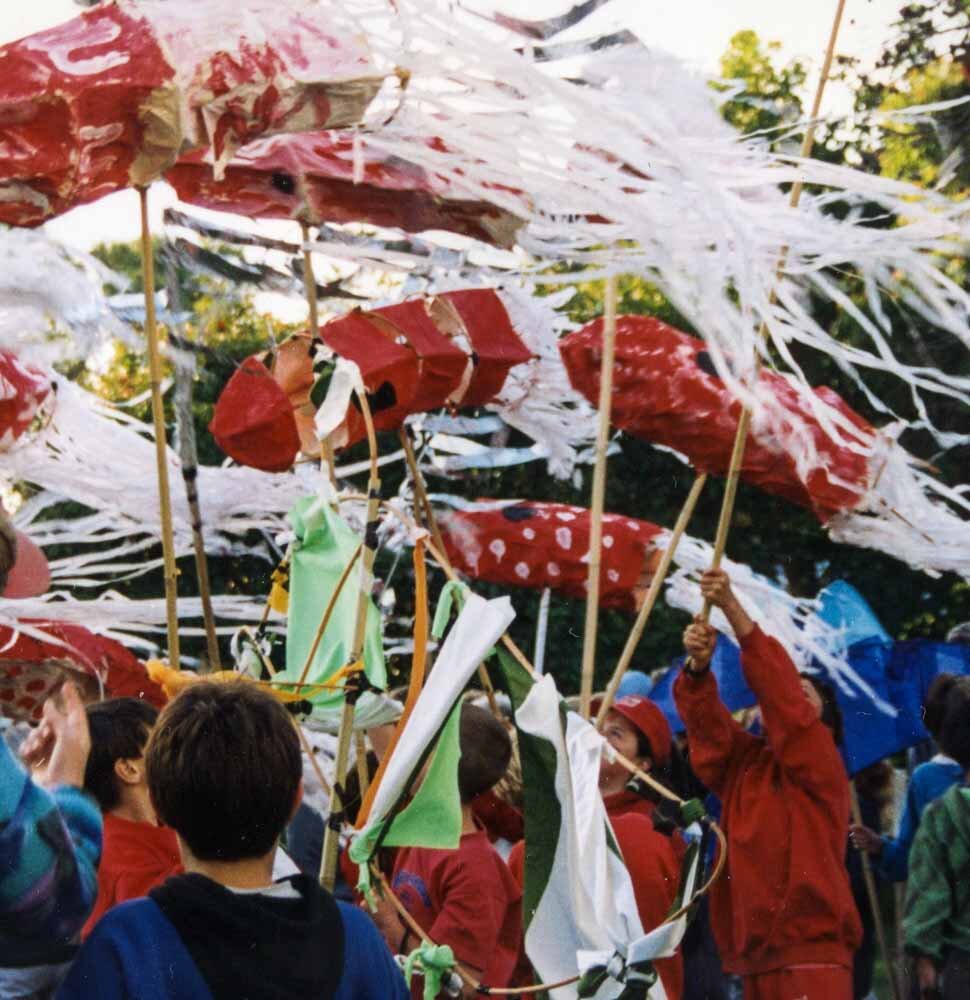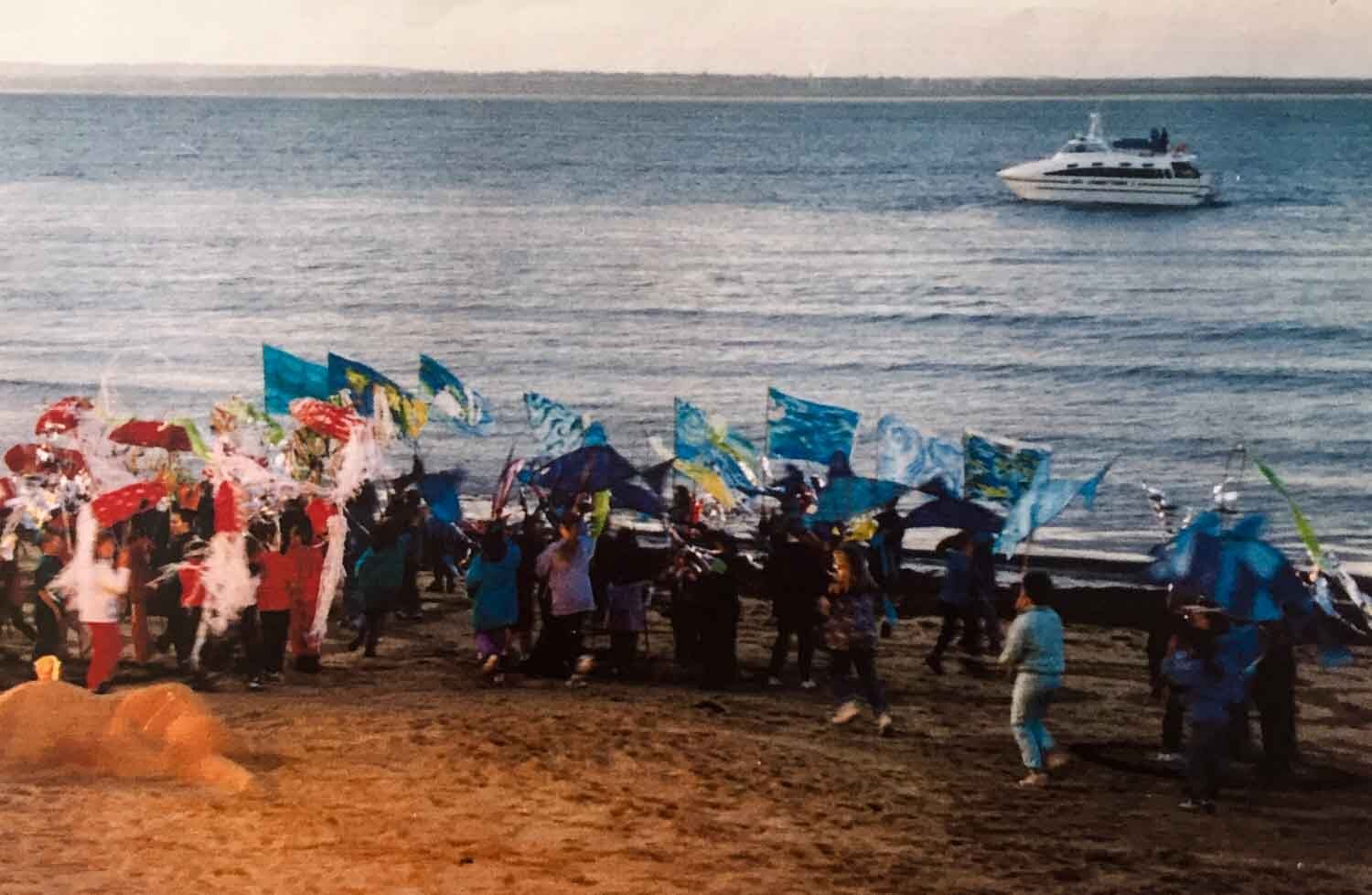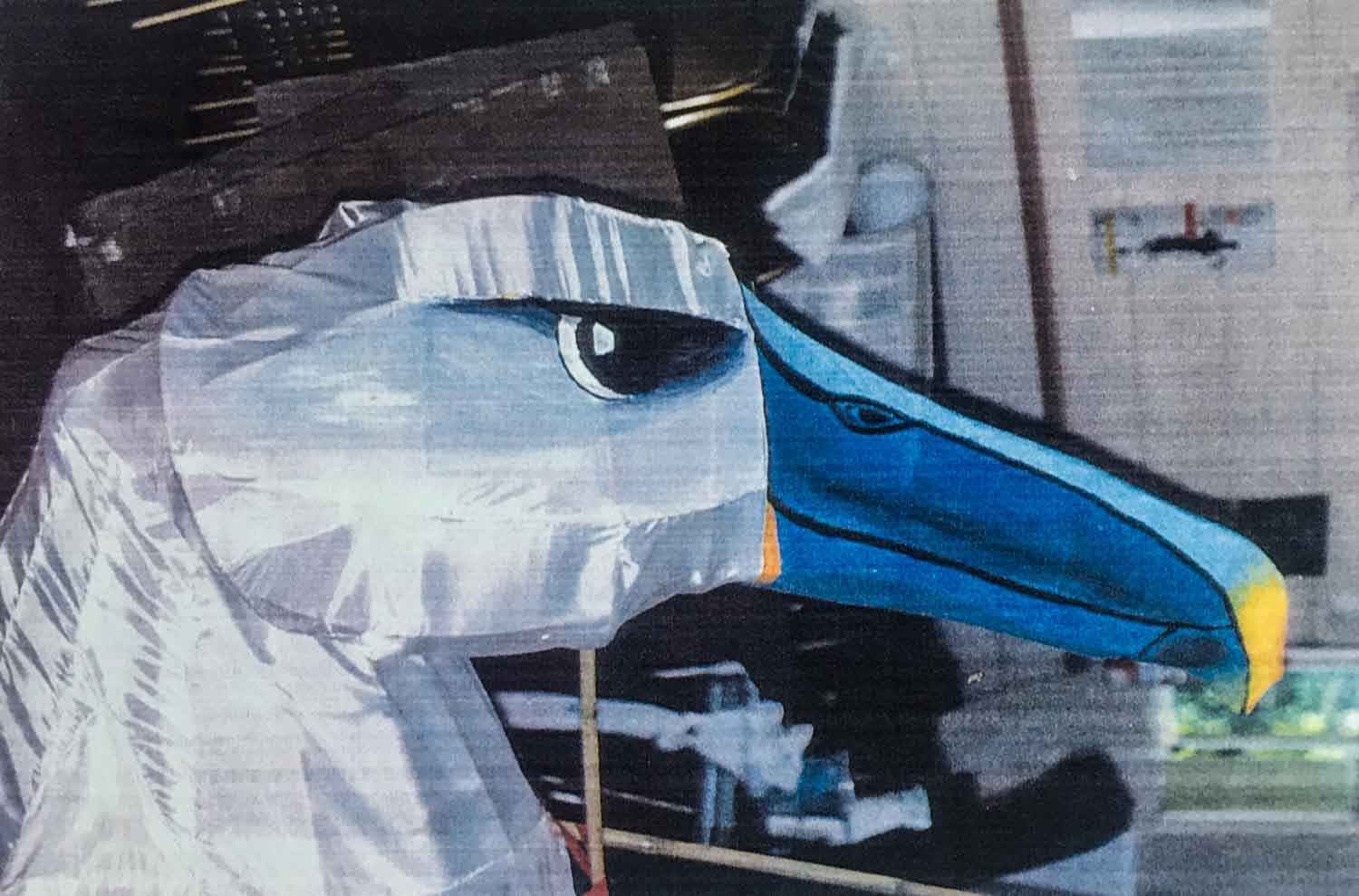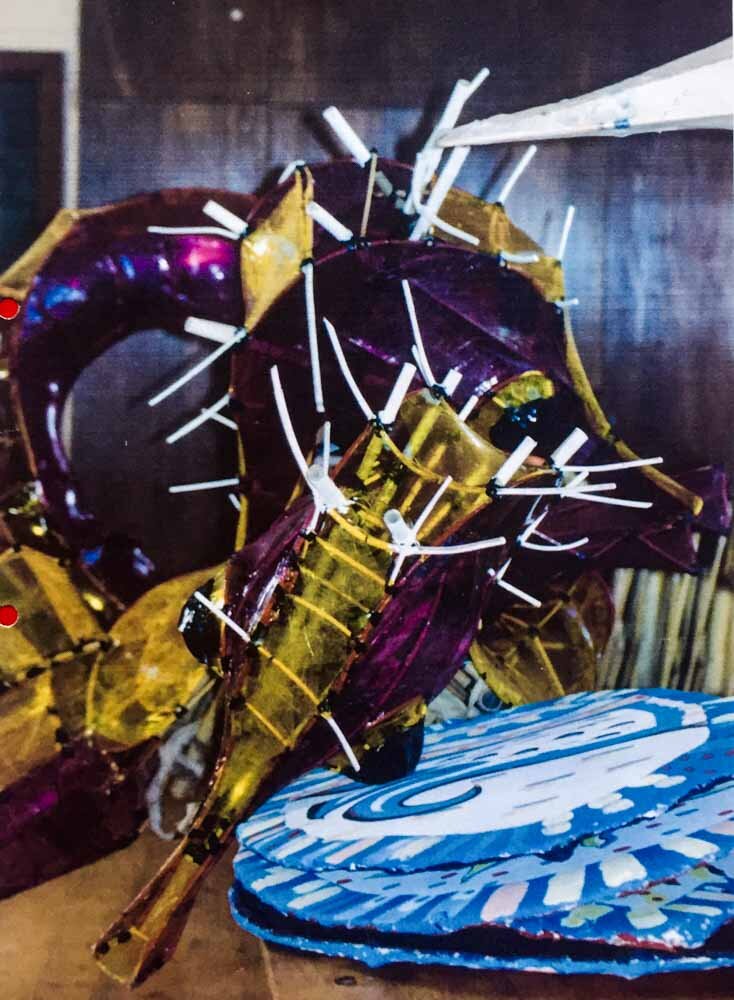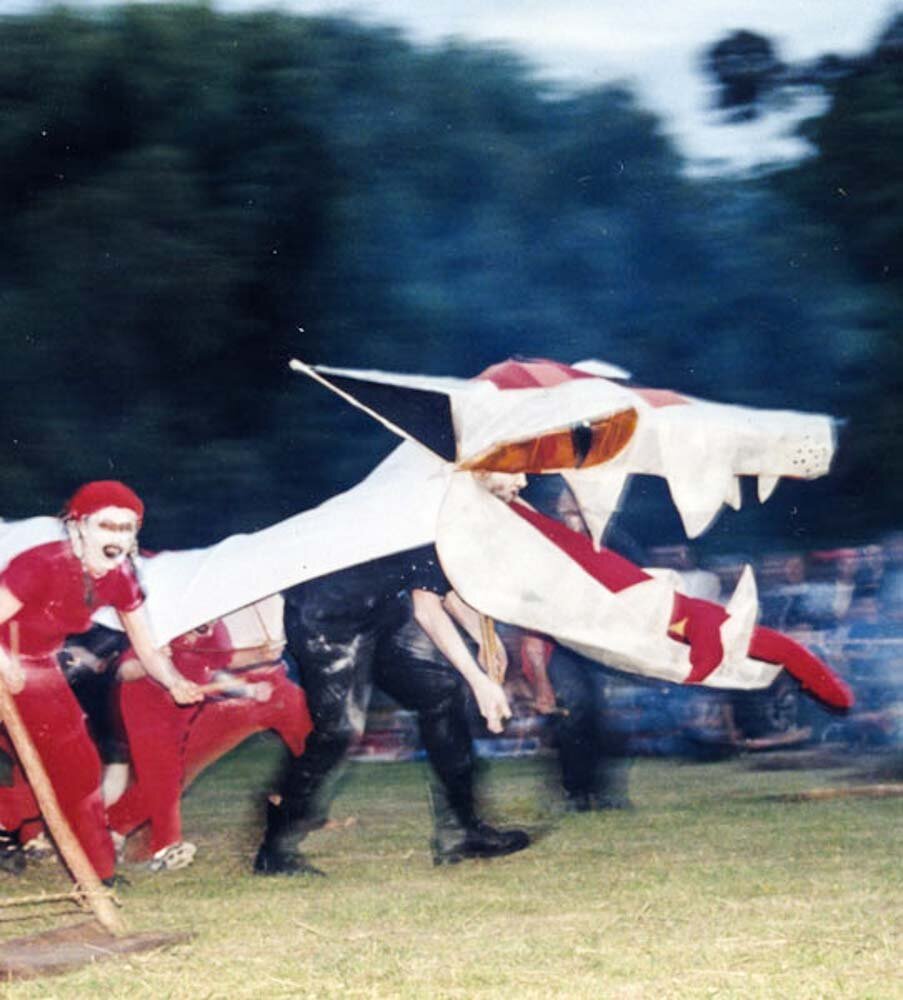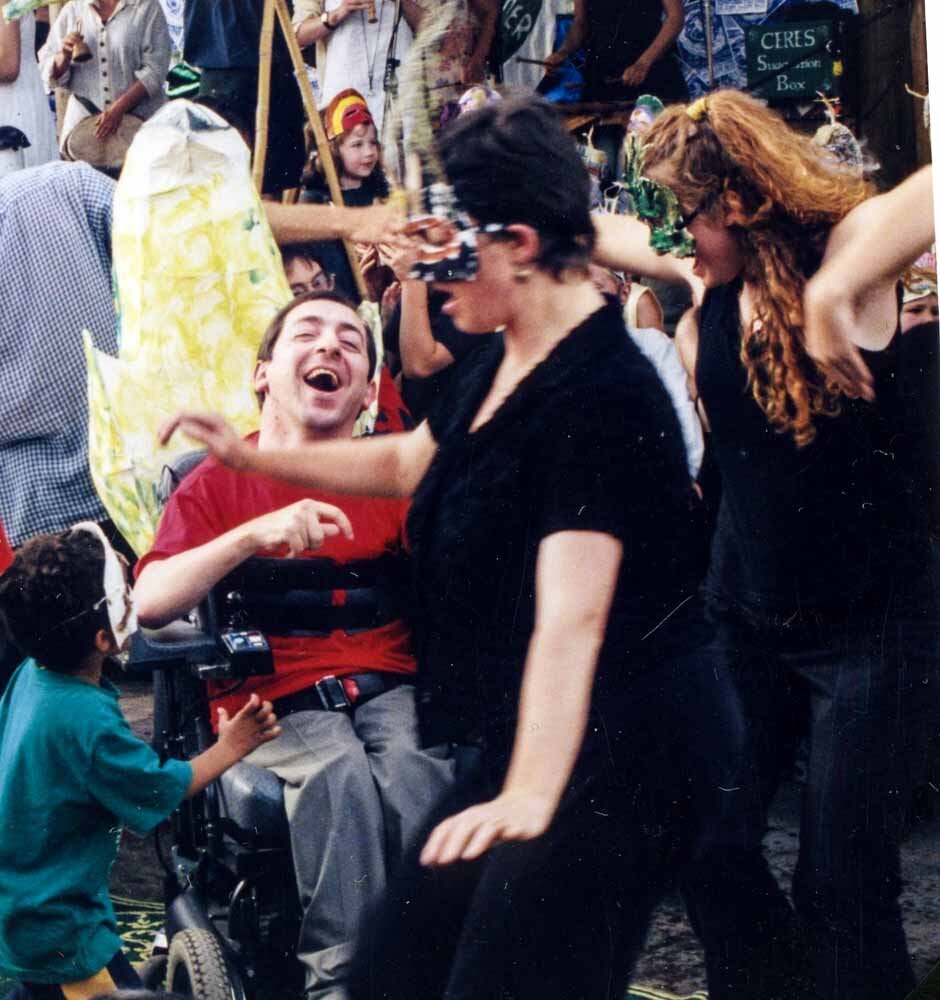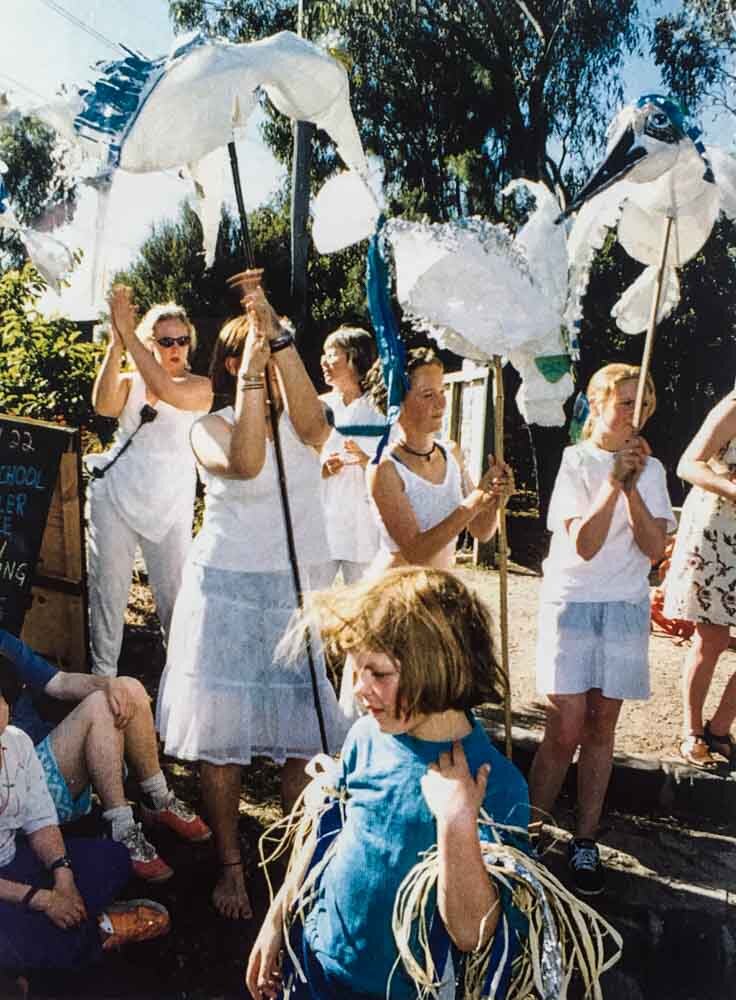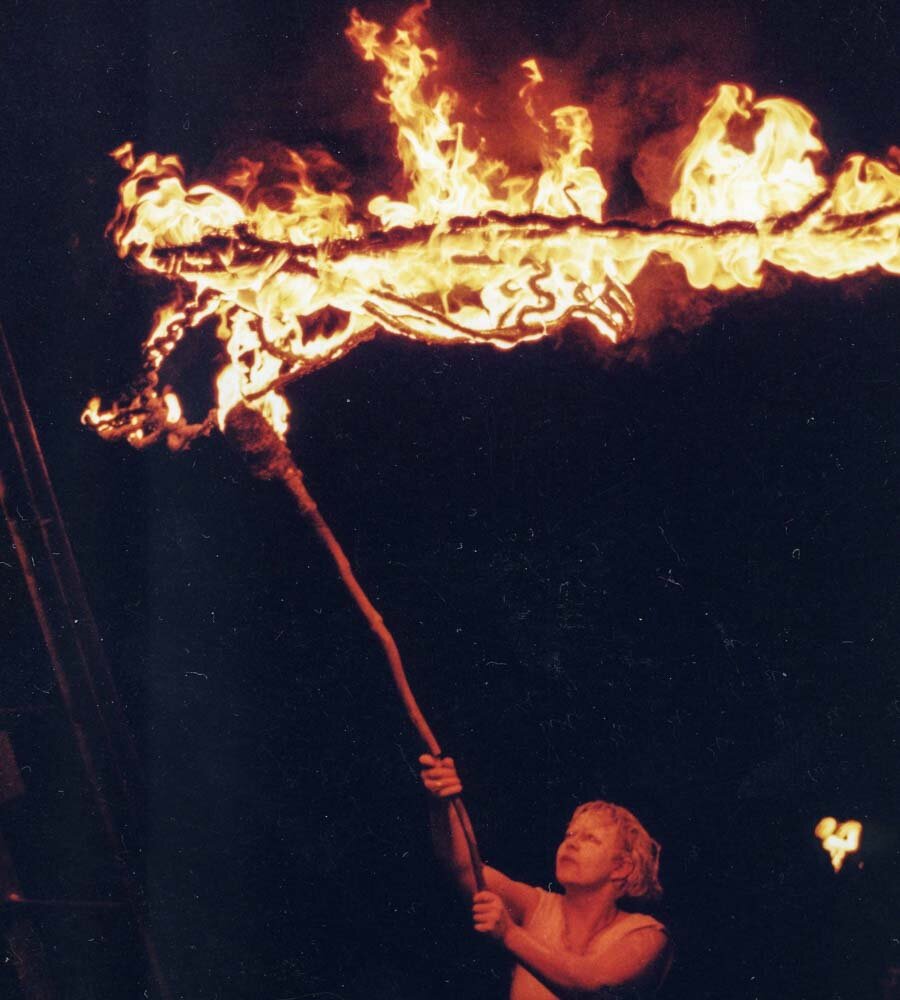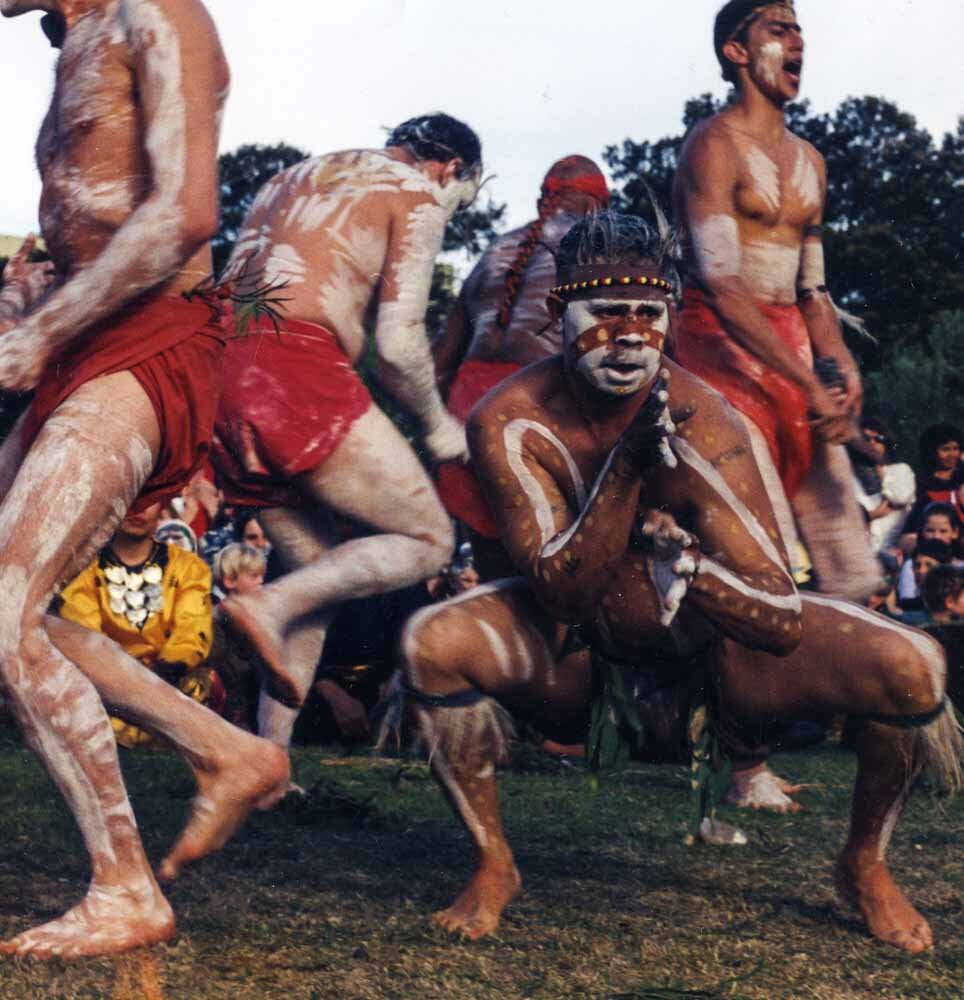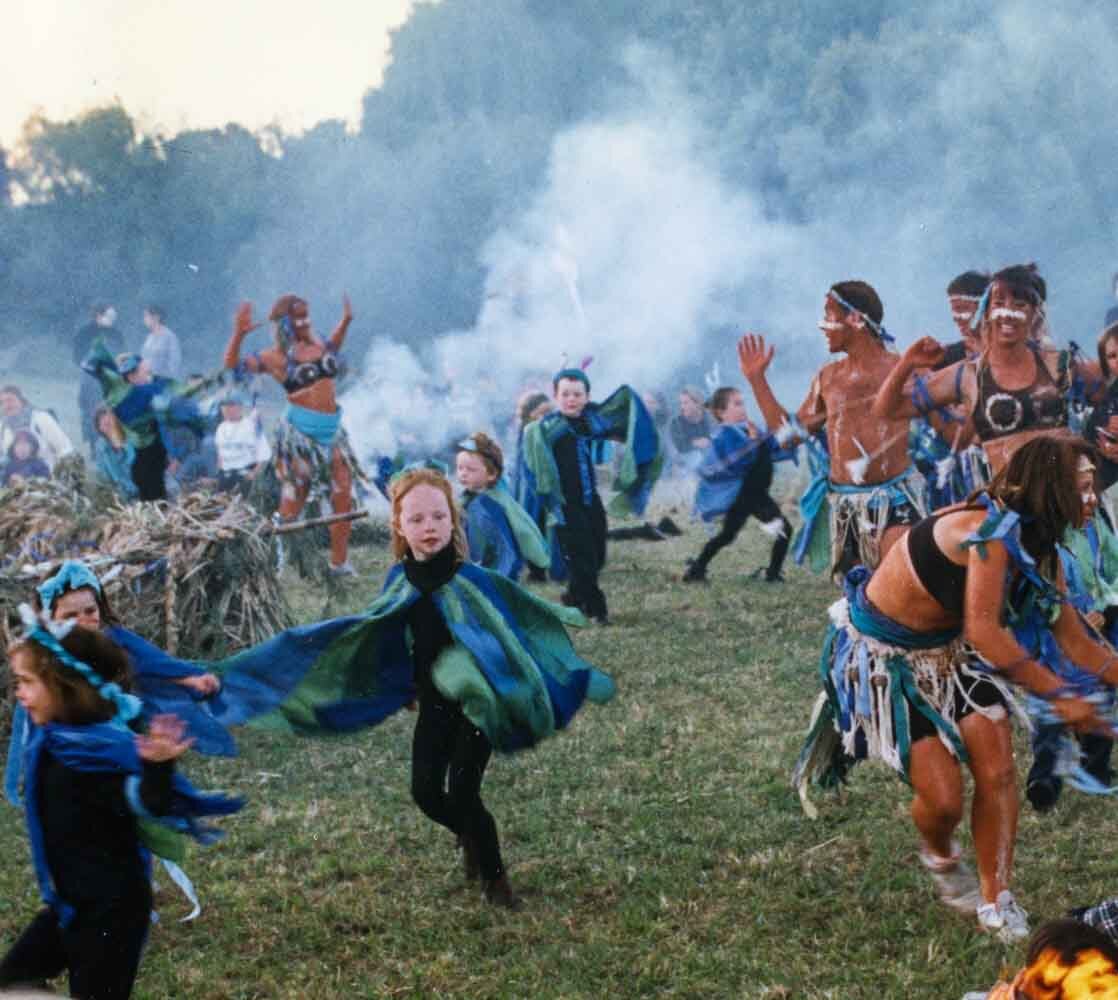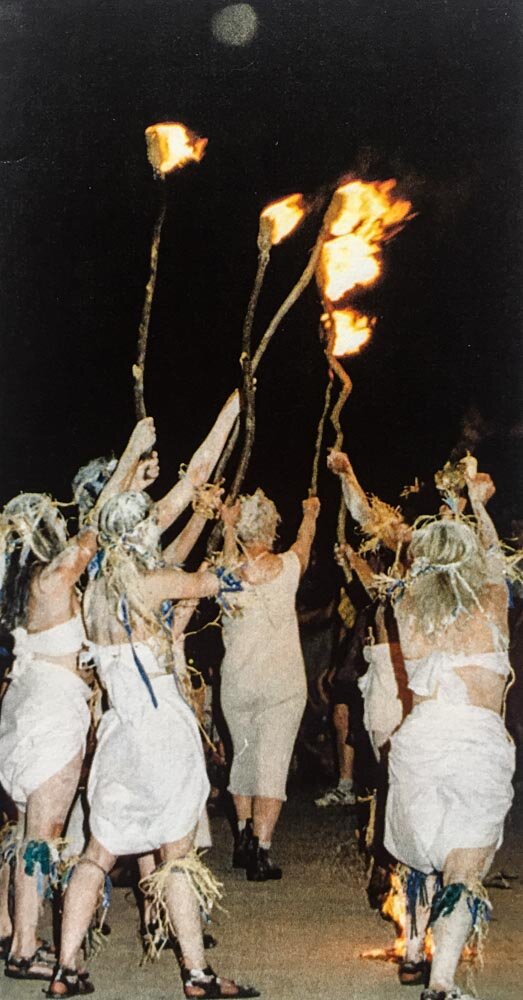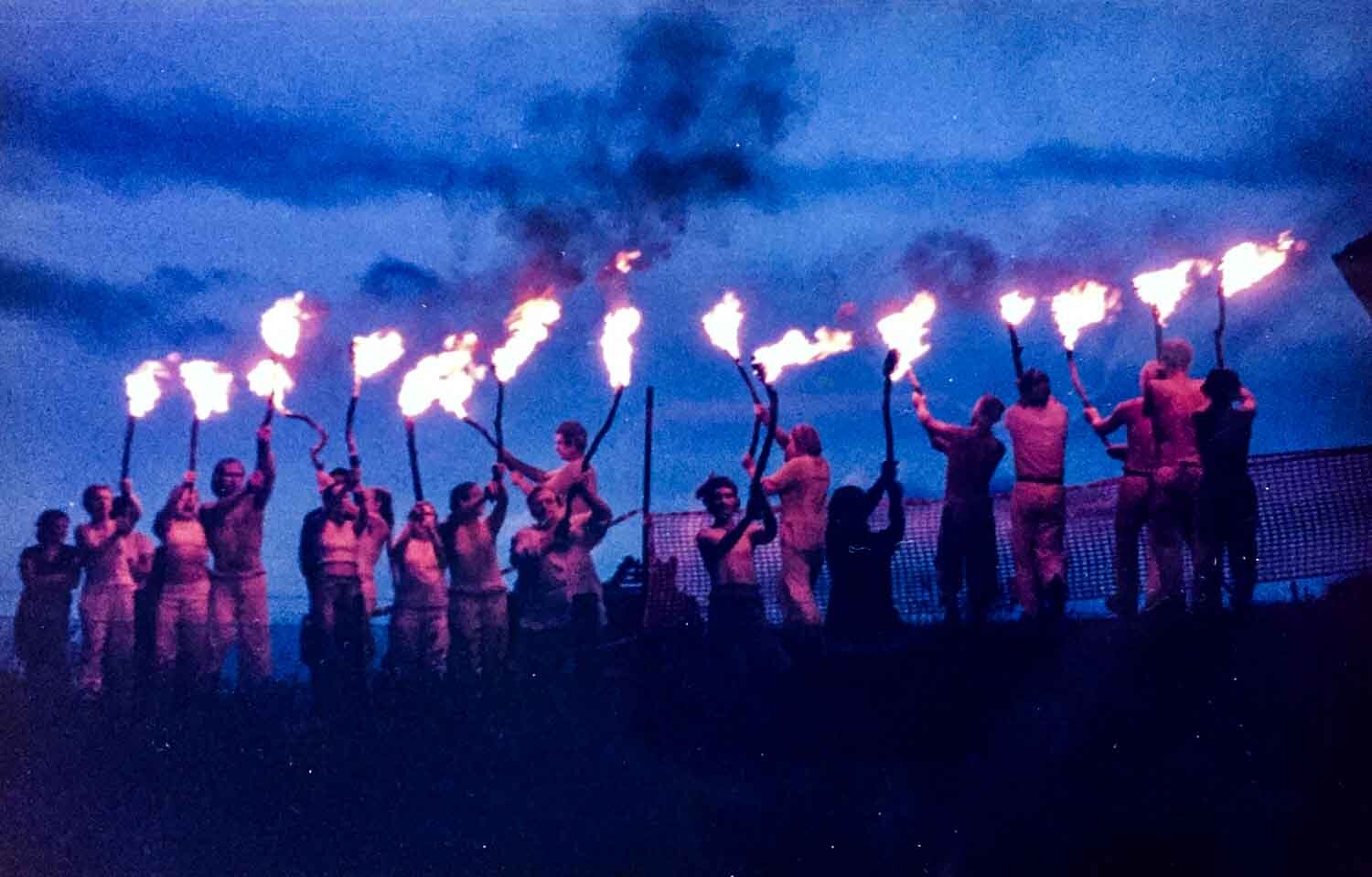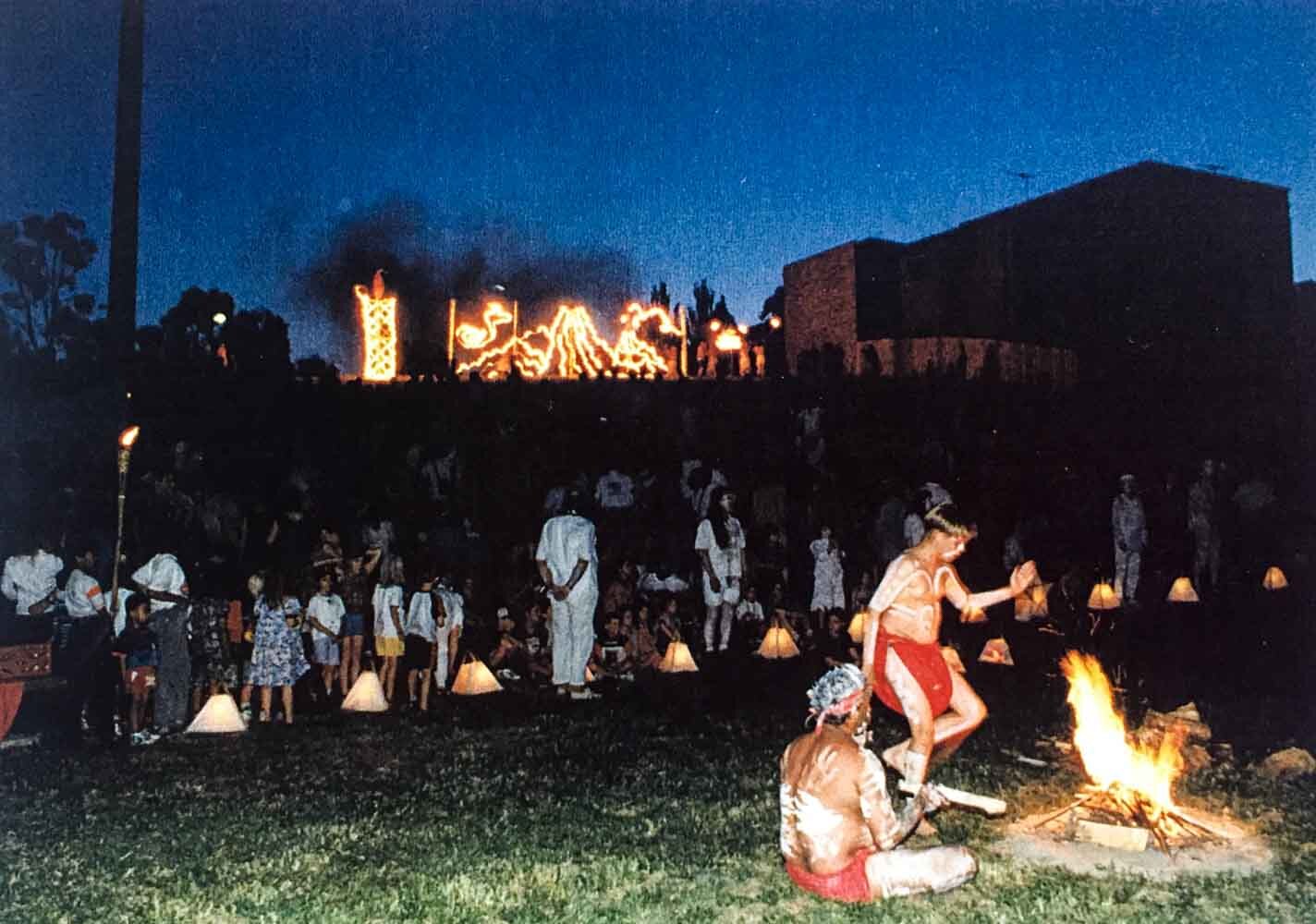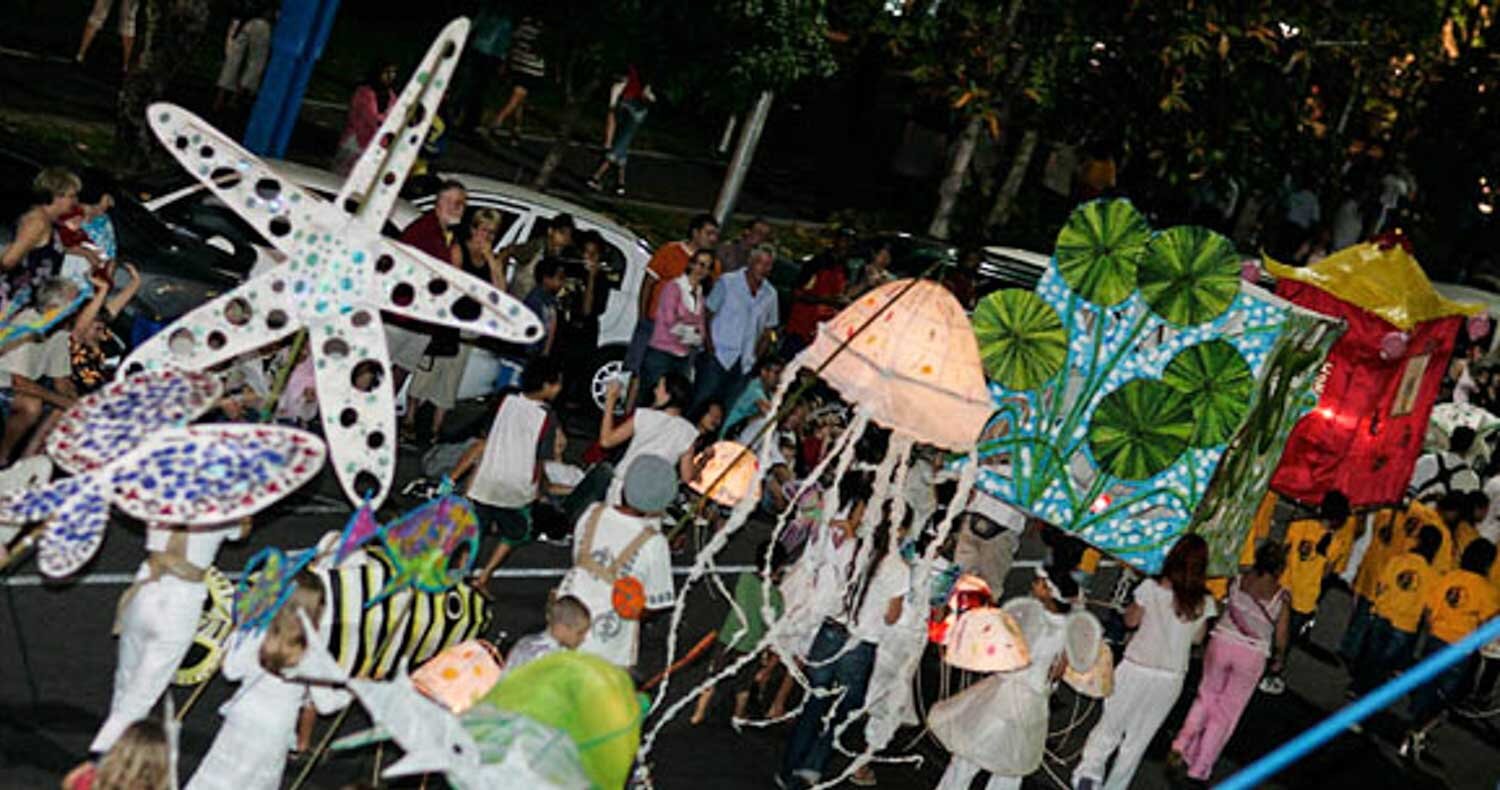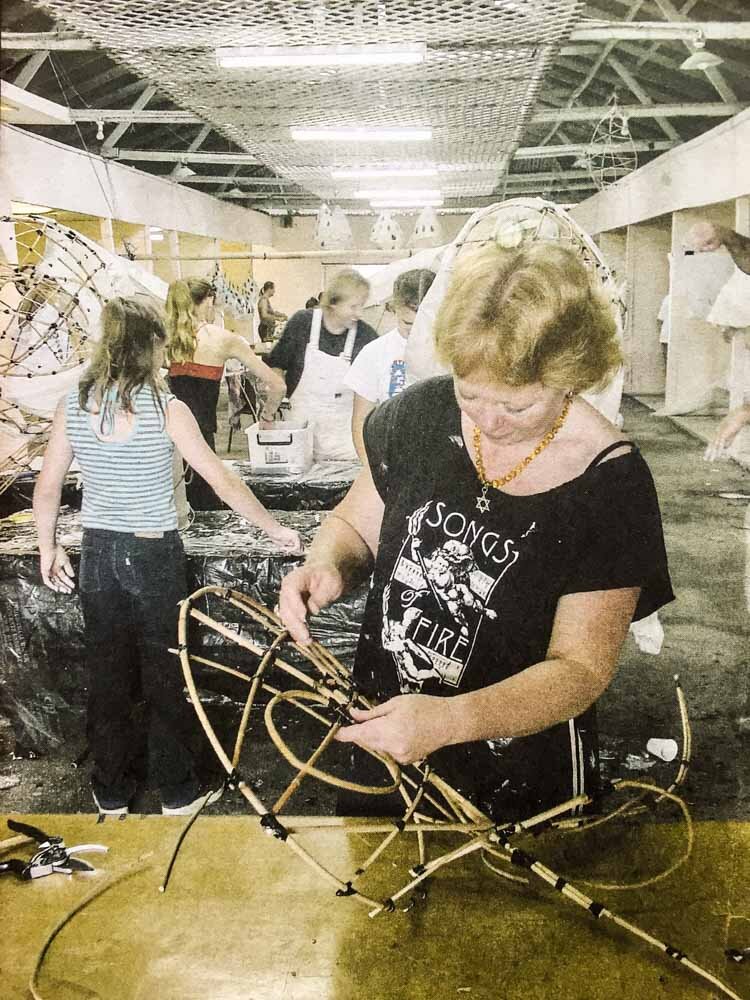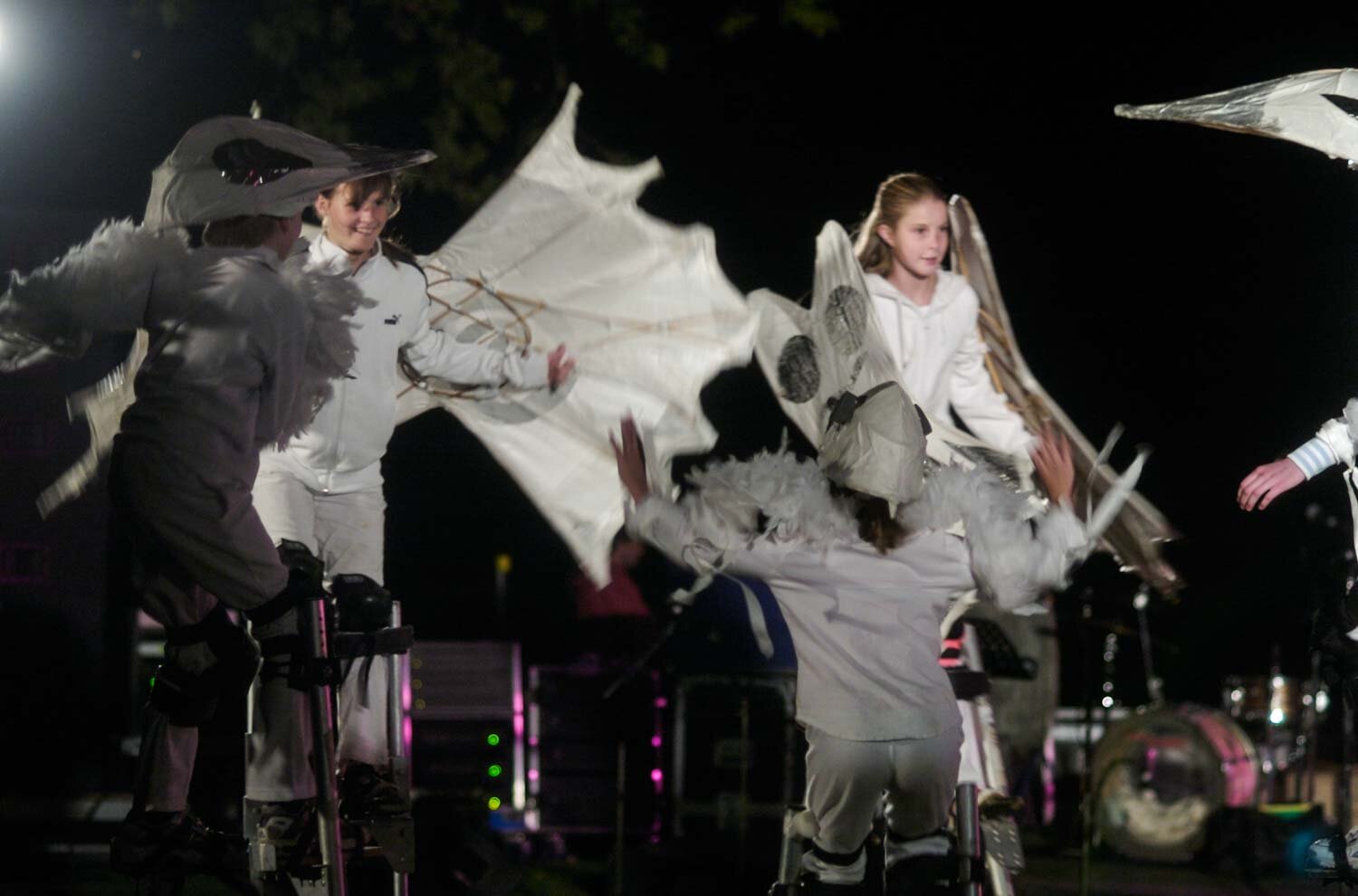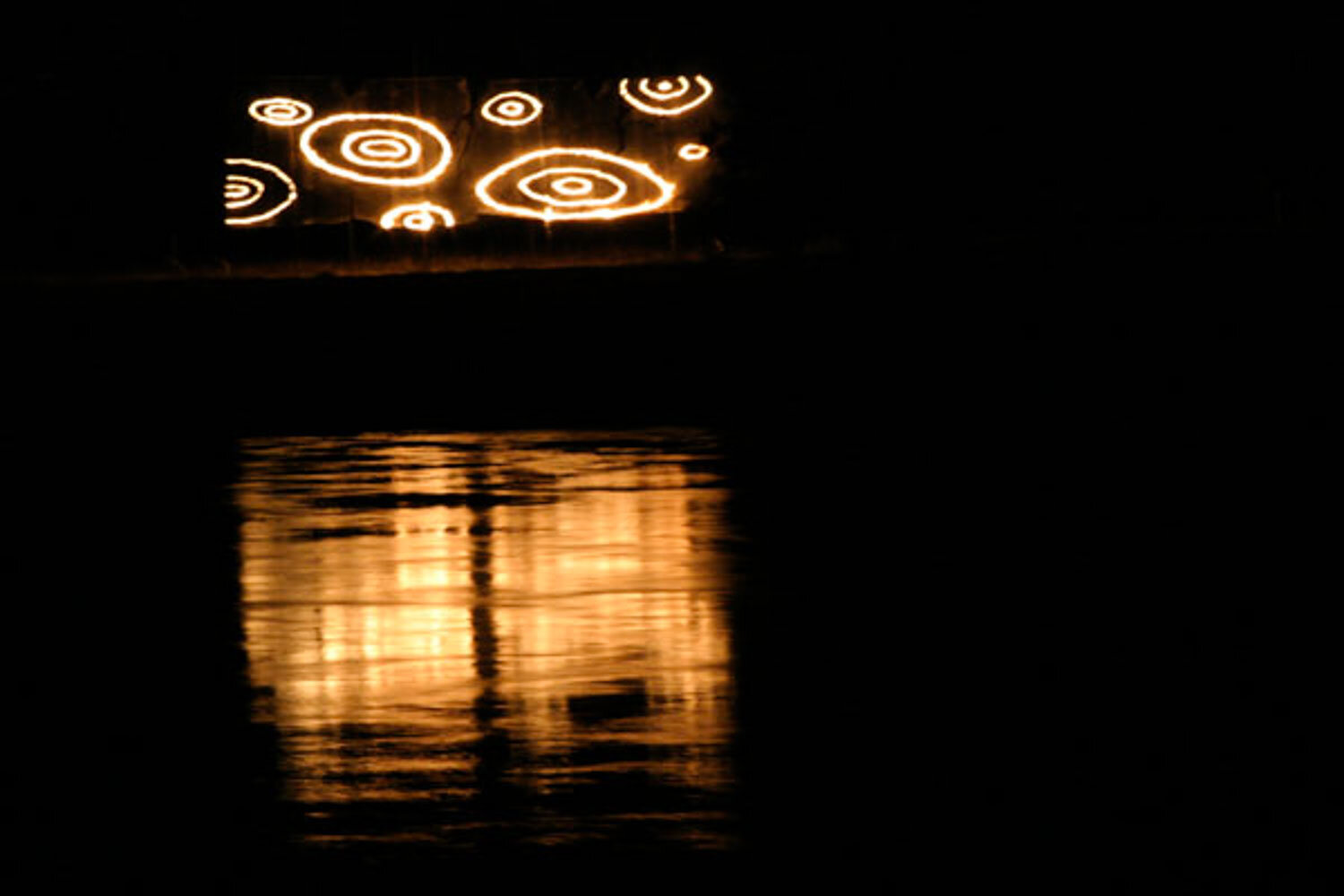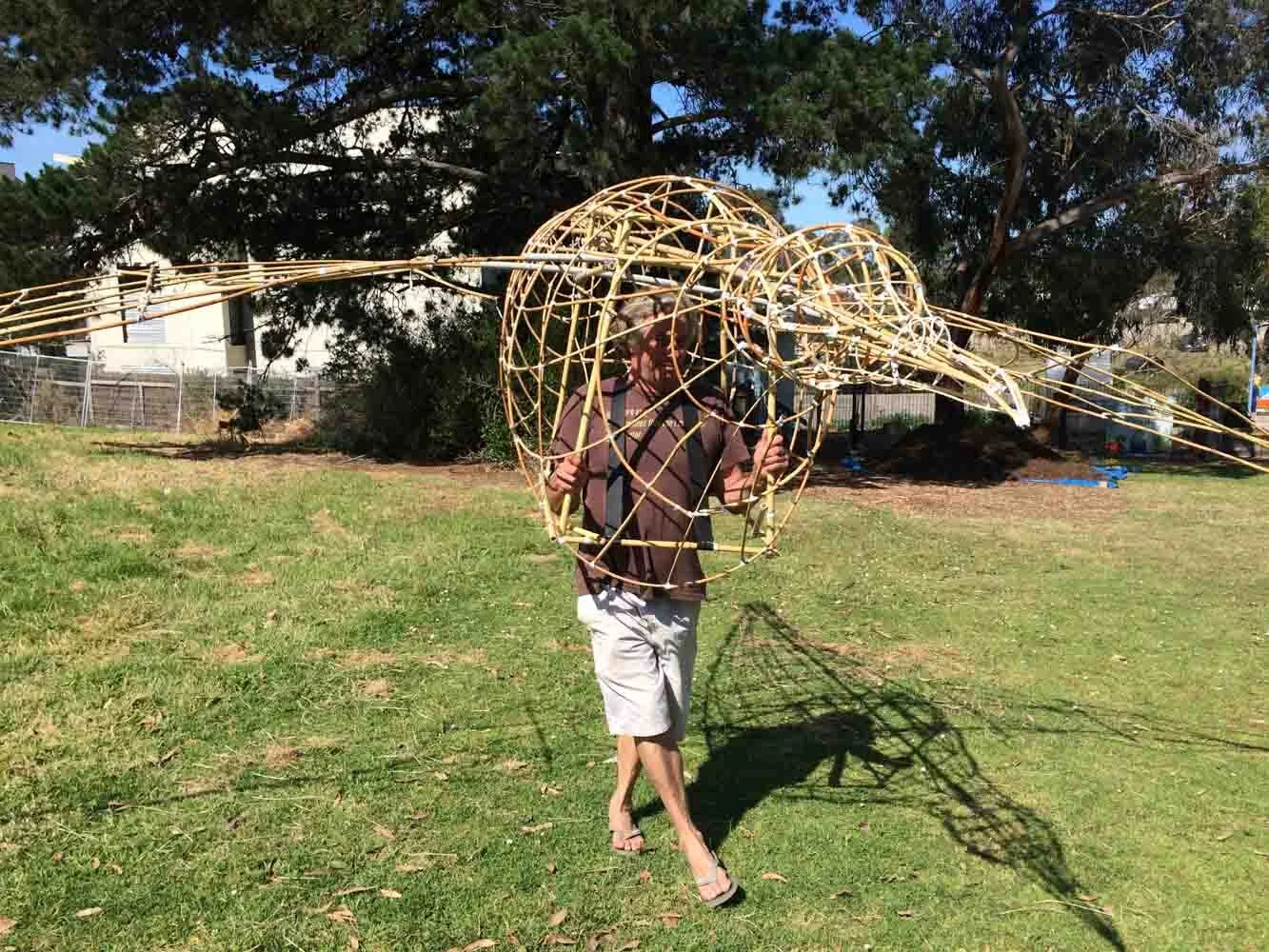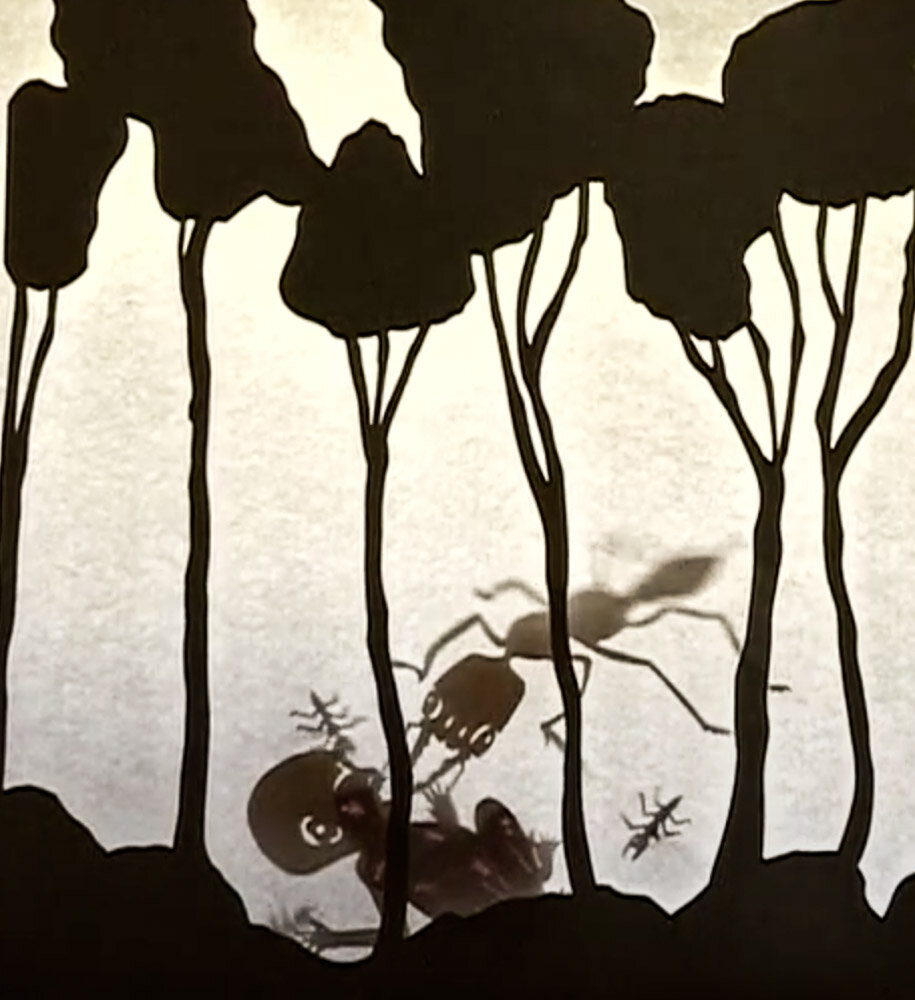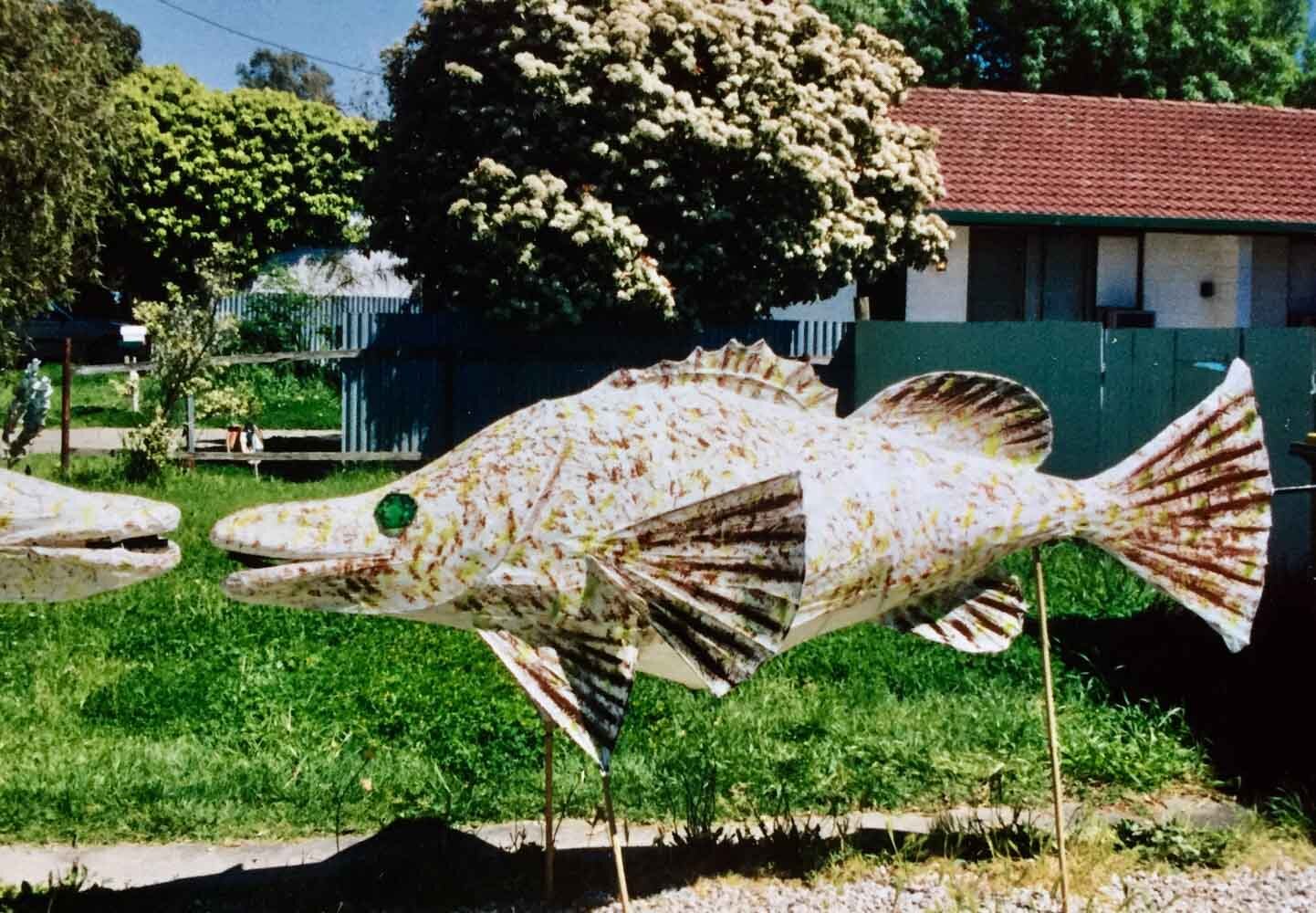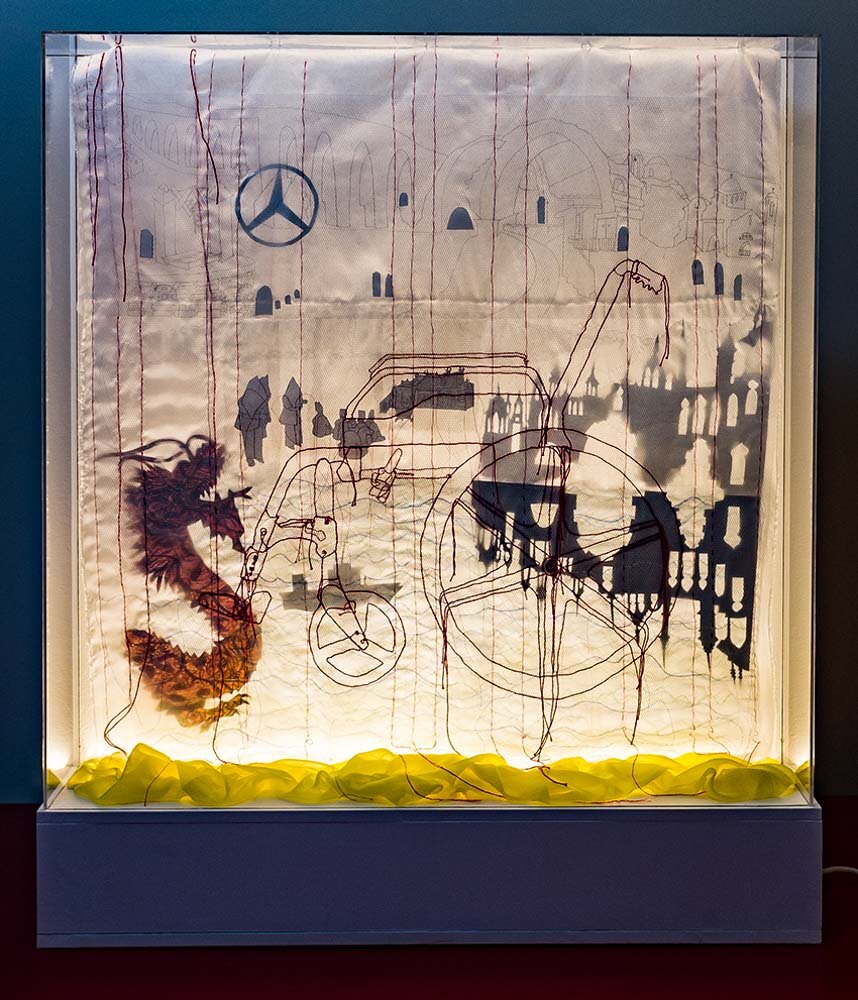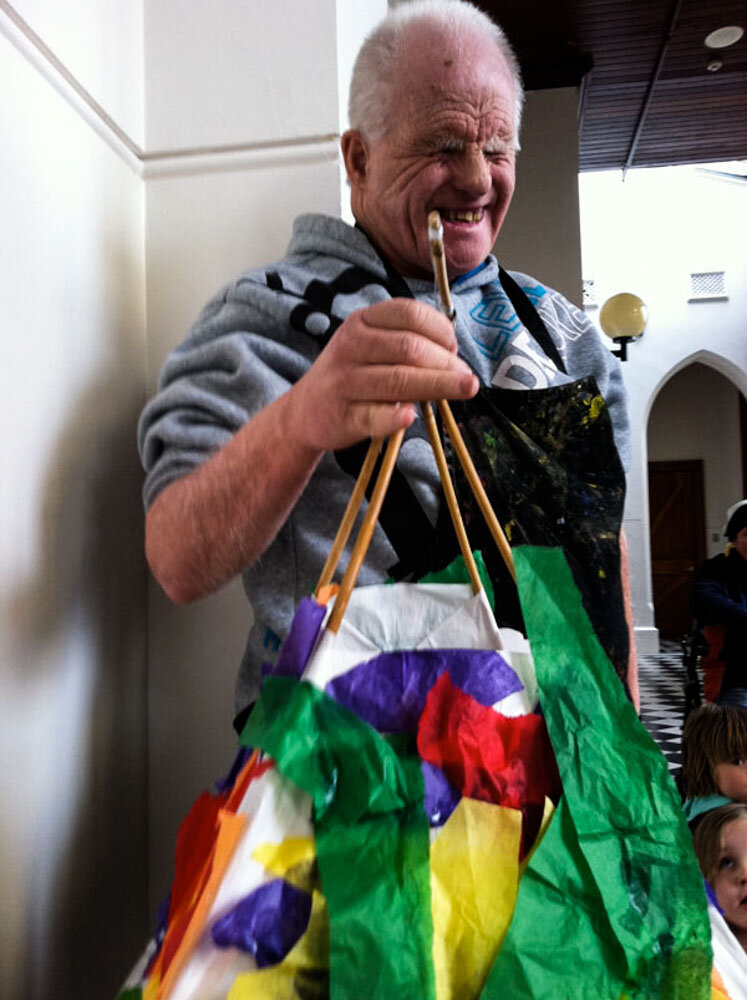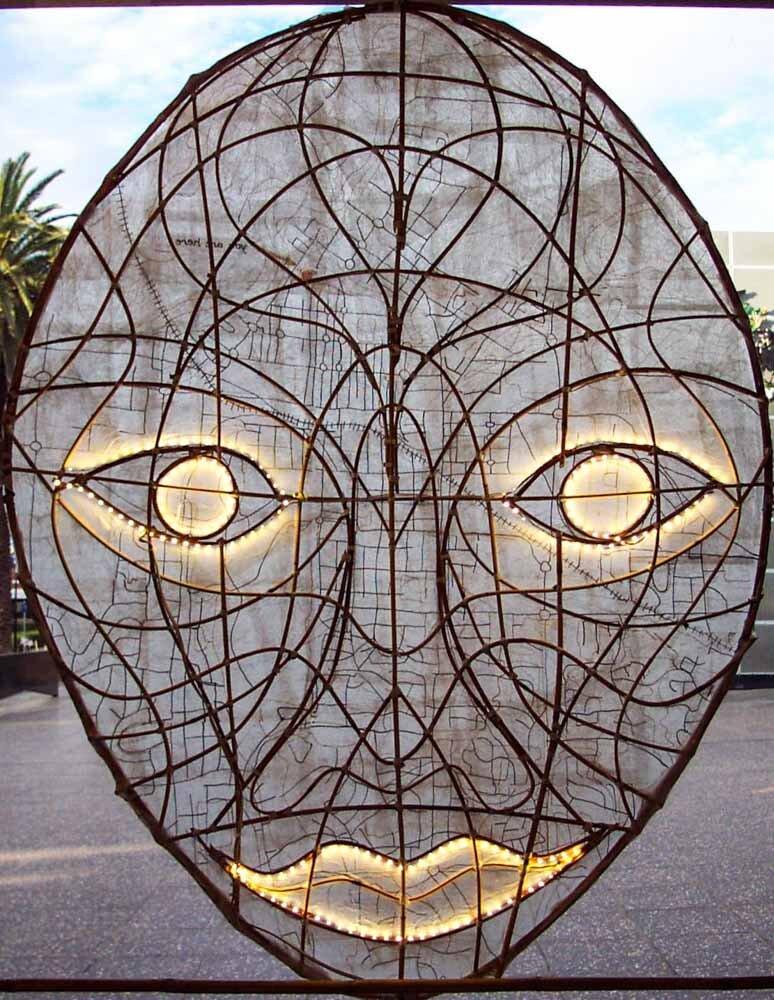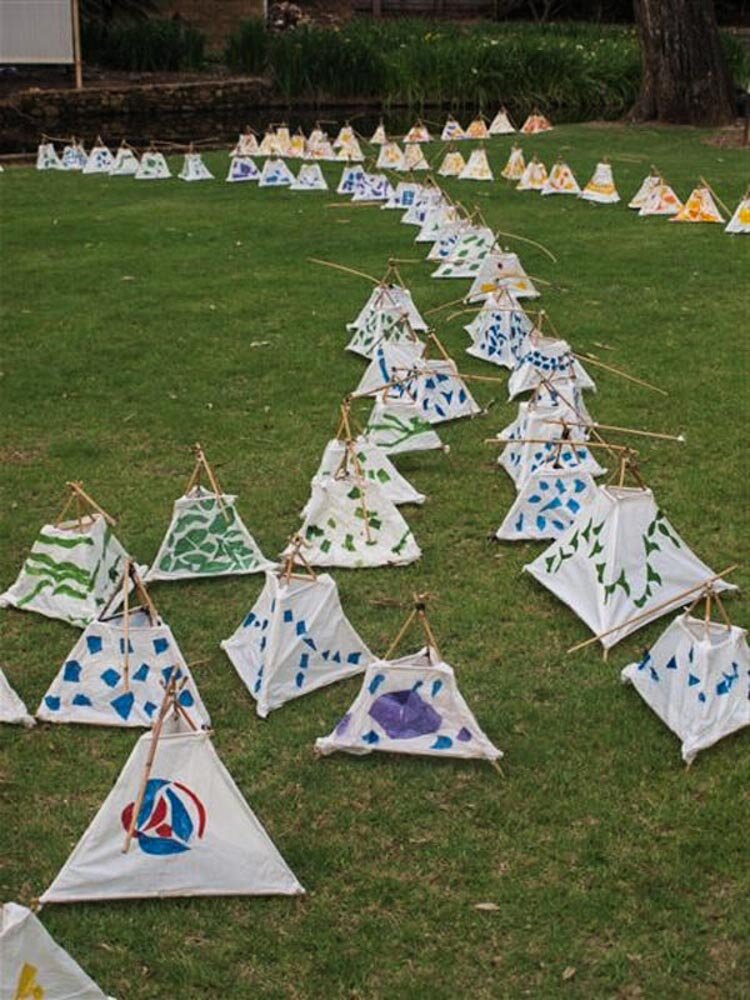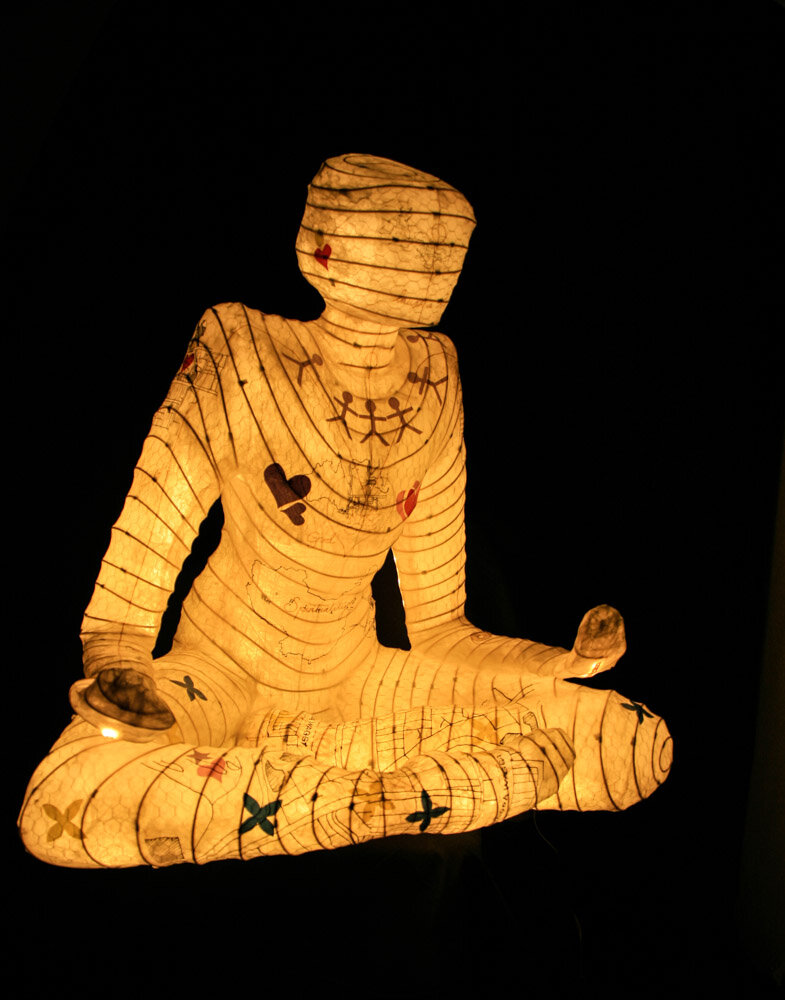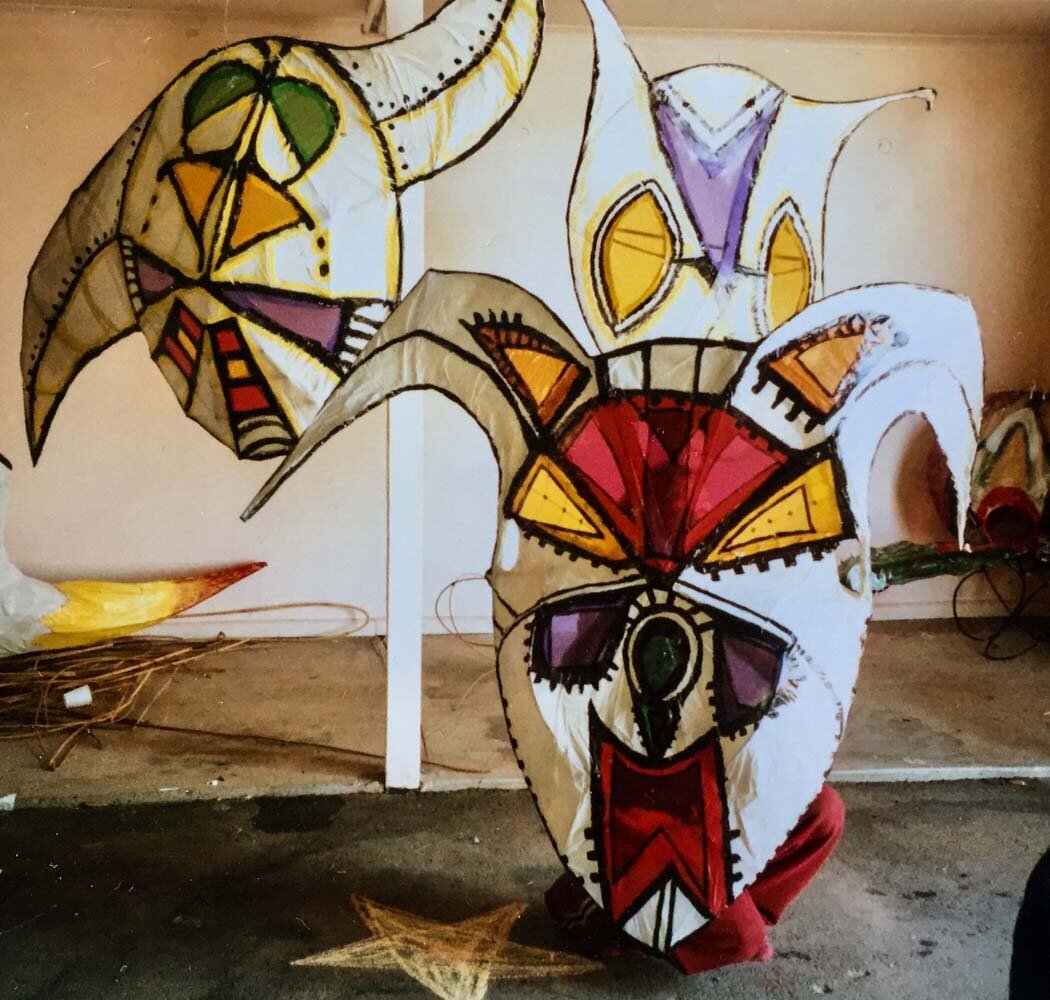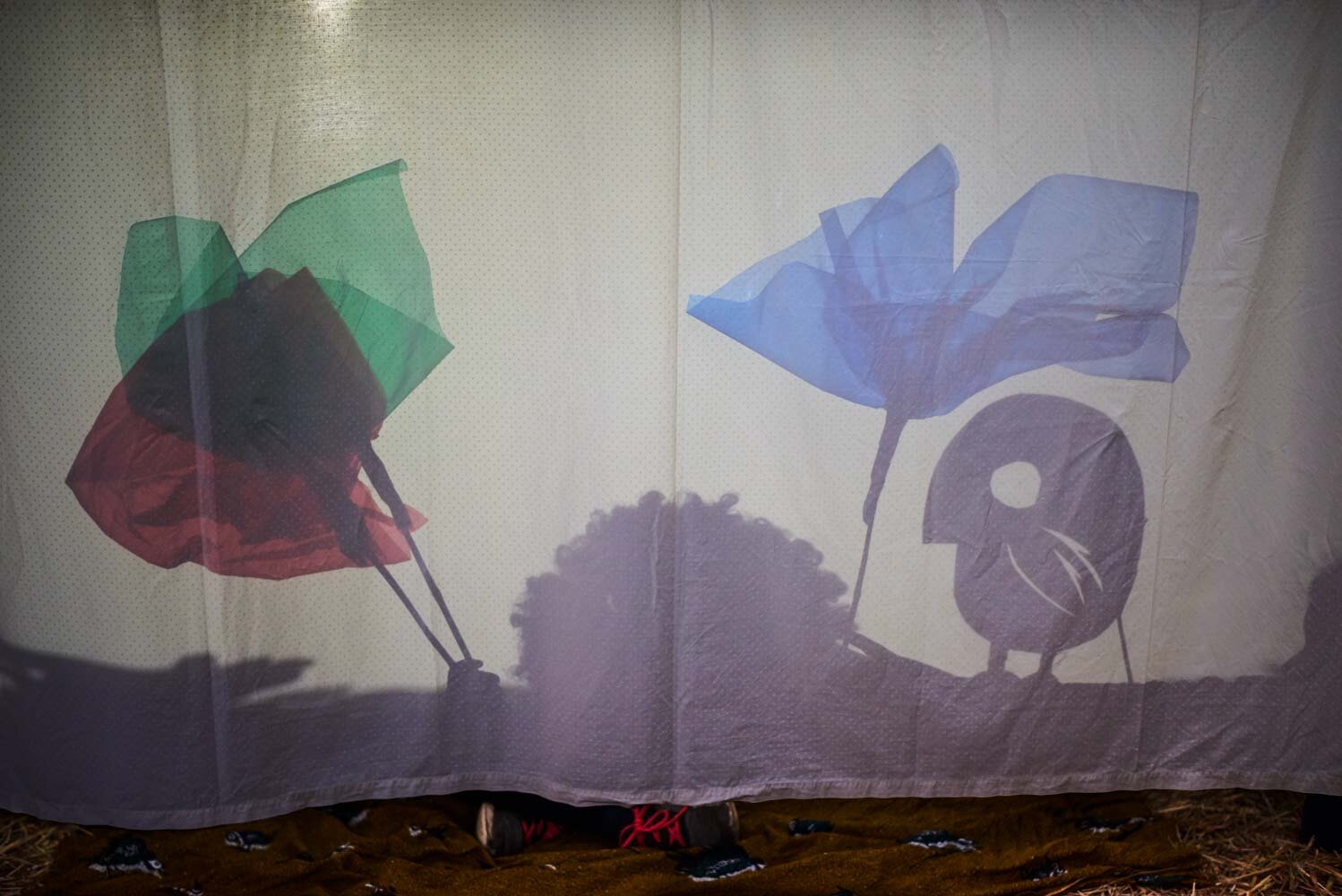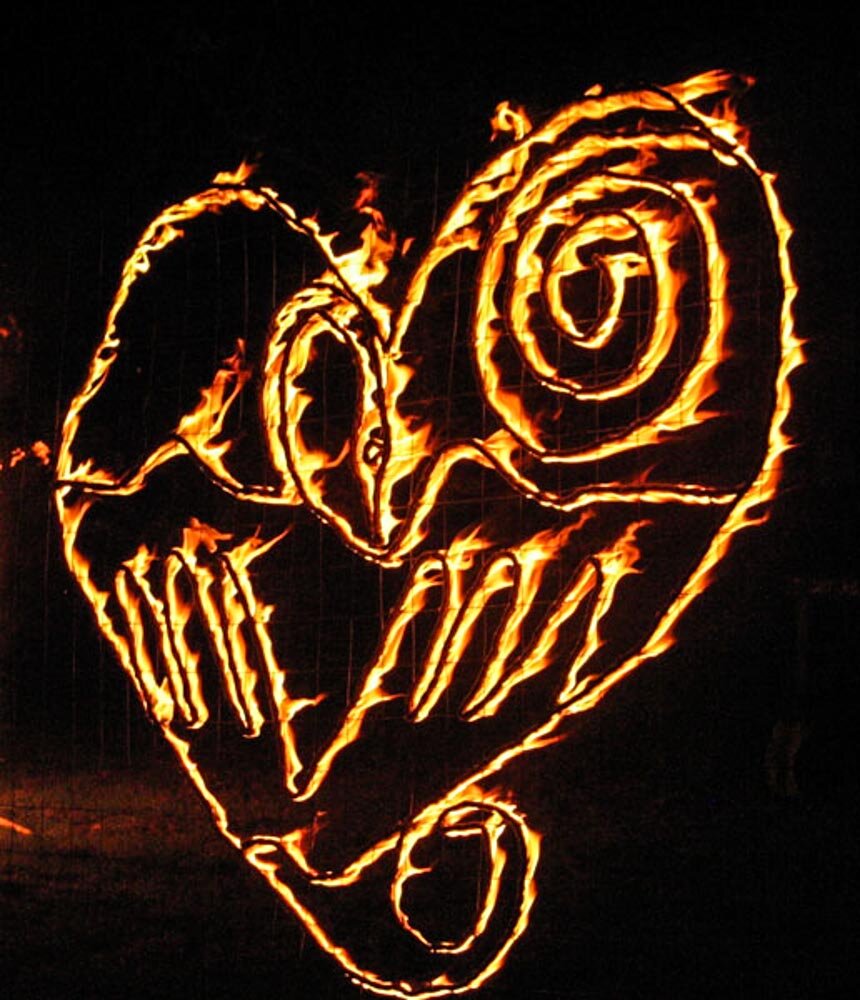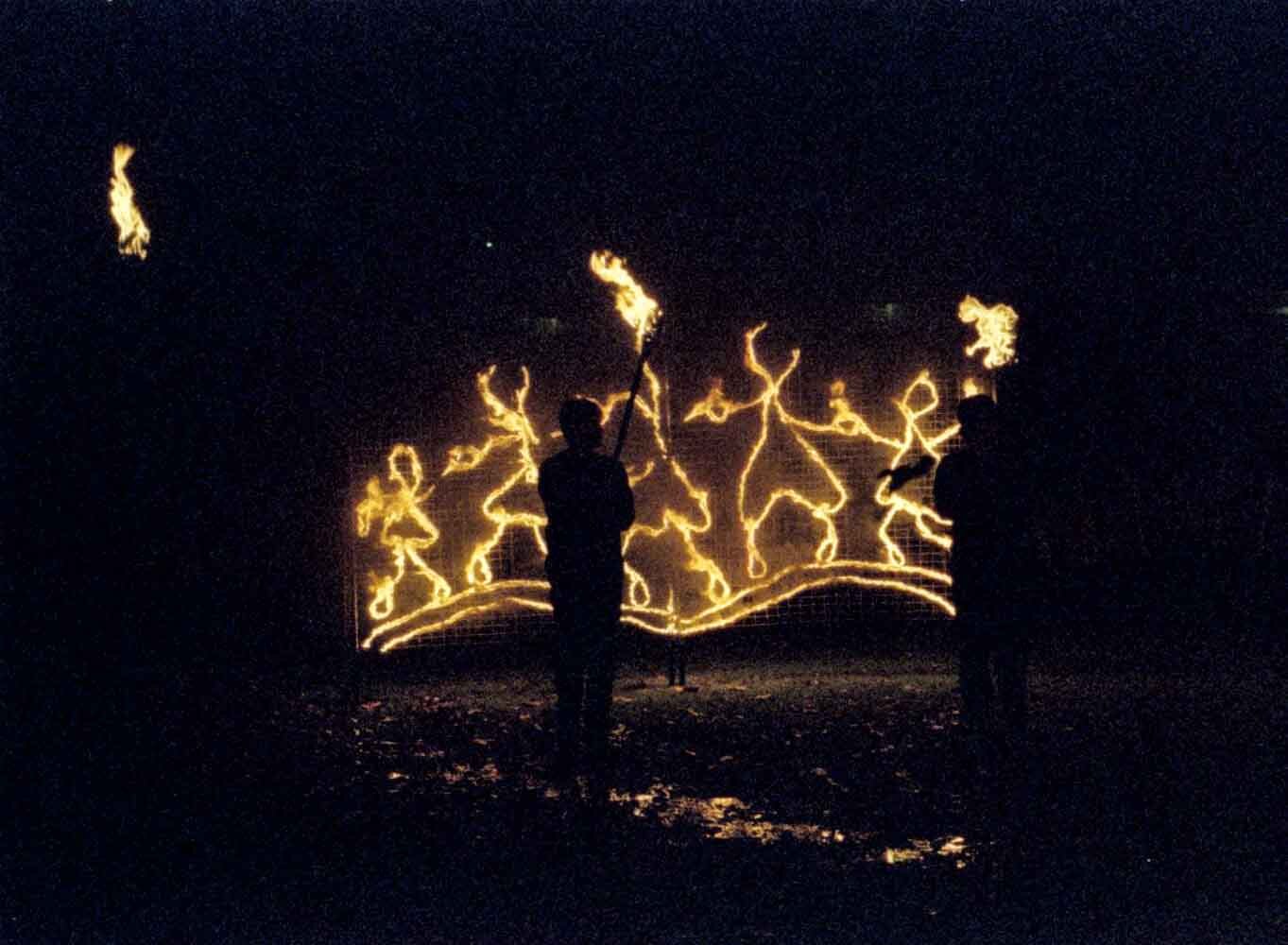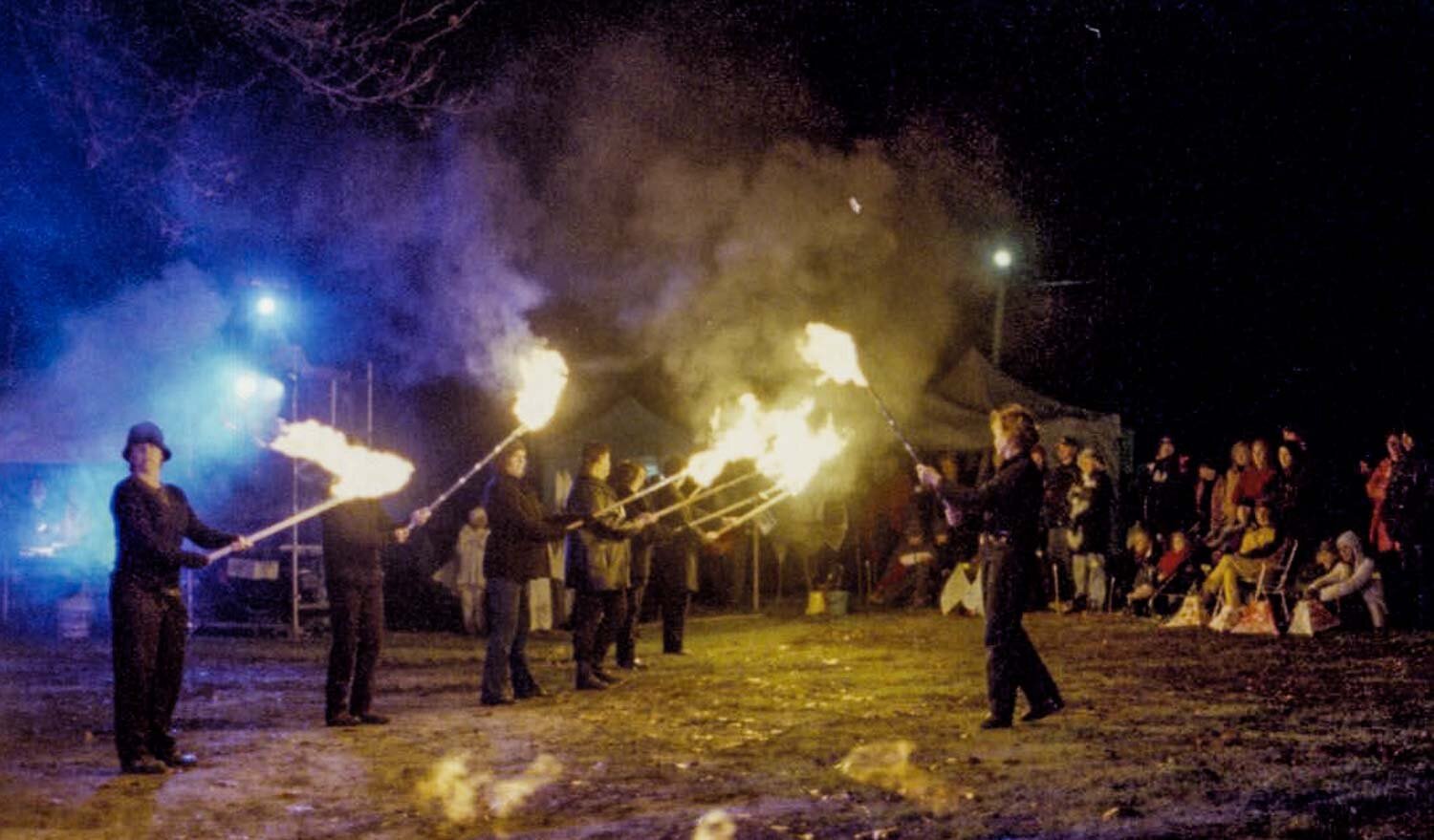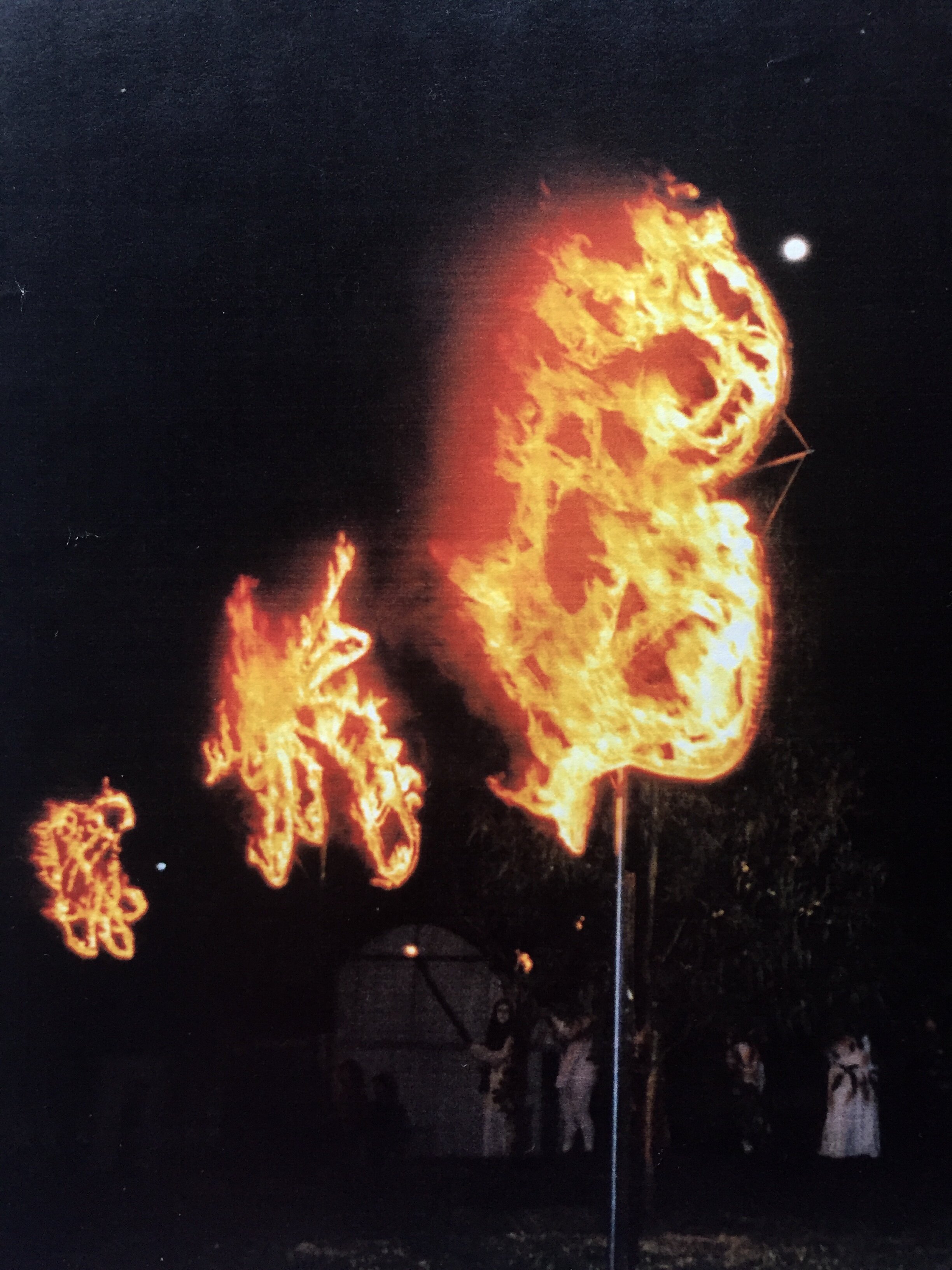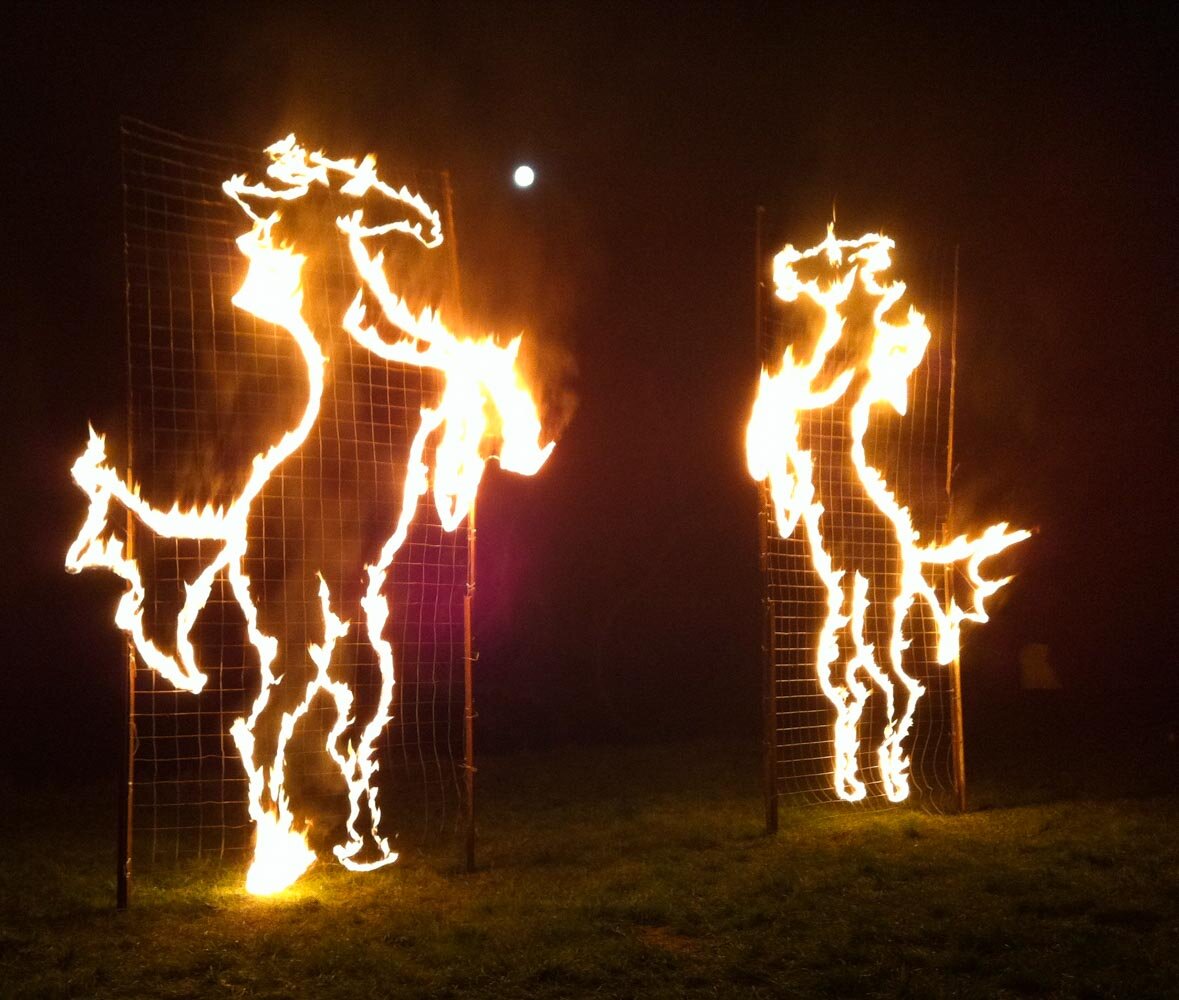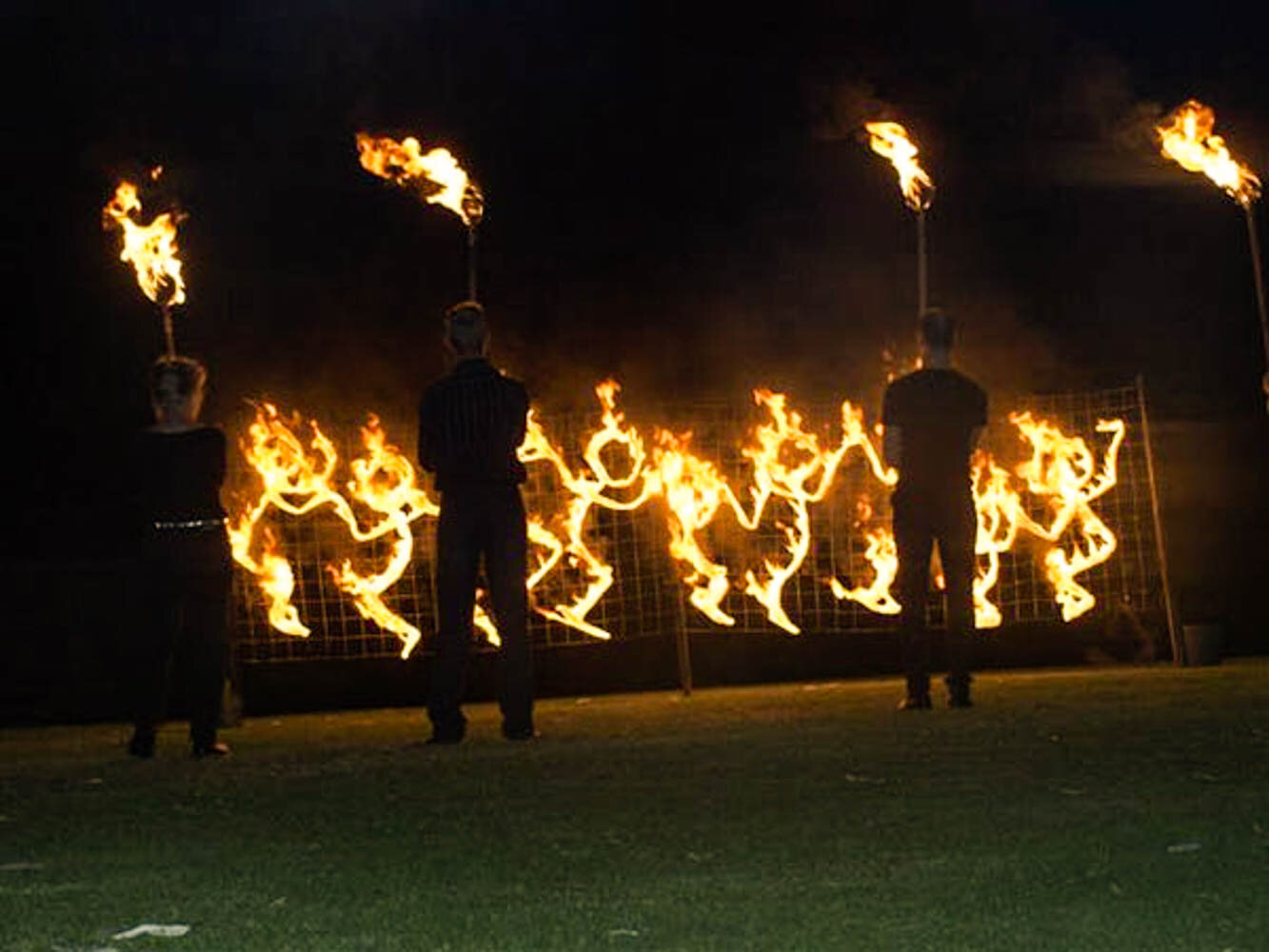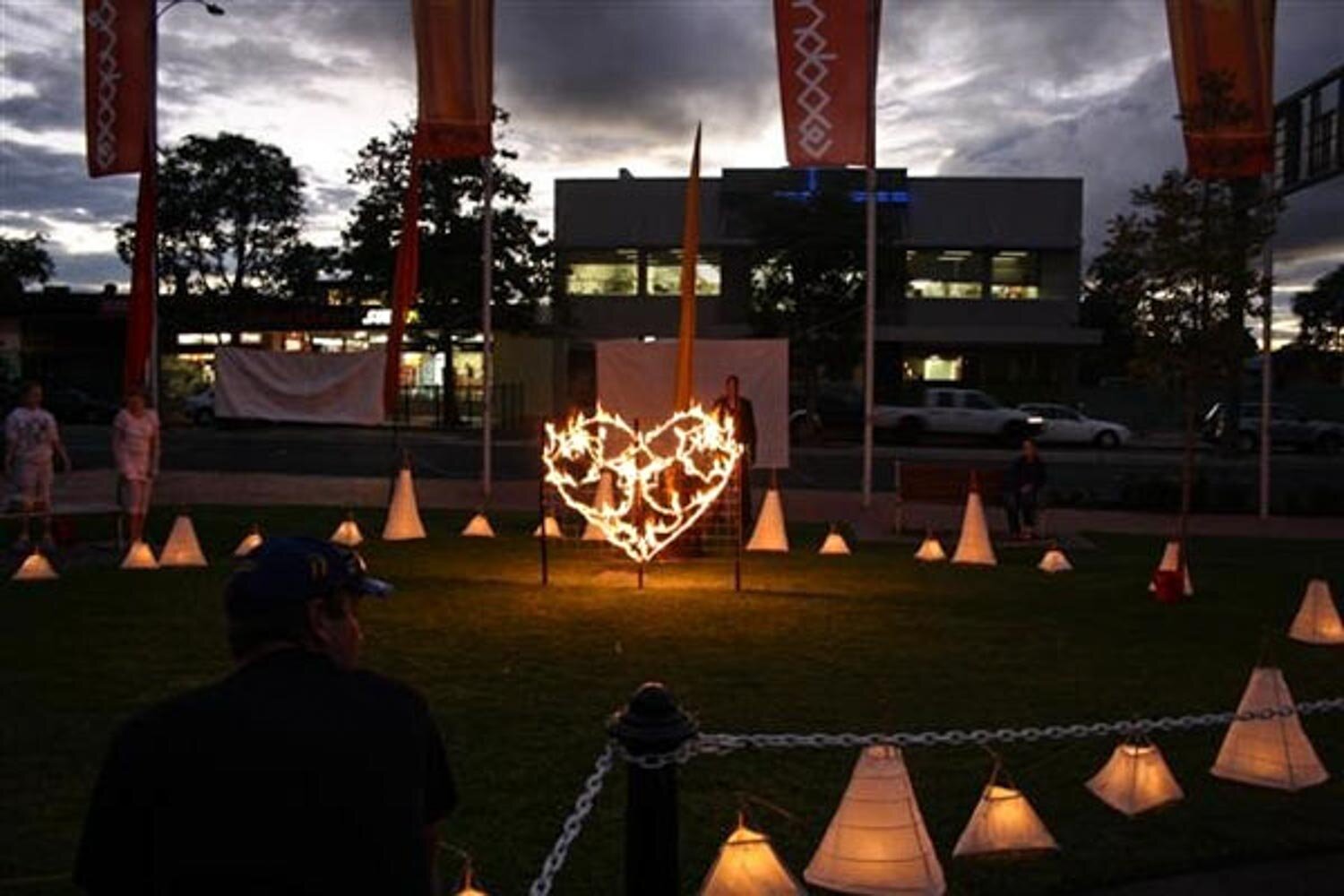COMMUNITY CULTURAL DEVELOPMENT
In 1992 Freyja and I moved to Phillip Island, just six months before they had an arts festival they had been planning for six years . I’d been volunteering at the Melbourne City Council Event Workshop, set up by my friend Chris Minko, for community groups to make floats and other parade-ish things for Moomba. The Phillip Island Arts Council heard about this and quickly got me involved with their festival. For the first year I made a community parade, inviting community groups like the Cowes Yatch Club, Elderly Citizens, Fire Brigade, etc to put something special together and walk down the street. And I organised for an energetic Afro-Jazz band to play live on the Cowes jetty at the end.
Then the following year, Arts Council President Leanne Barnes suggested we do an outdoor theatre show on the beach … oh and have an Aboriginal Welcome to Country, which no-one did in those days. Leanne is still the most amazing arts admin person I have ever had the privilege to work with. Nothing was too much trouble, and if I came up with a good enough idea, she could find the money honey.
Organising that Aboriginal Welcome To Country was my introduction to Australia’s Indigenous culture, and I learned much from Murrundindi and Ian Hunter, cultural teachers, brothers and sons of Jesse Hunter who was the recognised Elder of the Wurundjeri people. At the time people on Phillip Island thought no Boonwurrung people lived in the area, and I was advised the Wurundjeri were custodians. While I lived on Phillip Island I worked quite a lot with Murrundindi, introducing him to the Penguin Reserve, and through this connection much work has been done to identify and support Boonwurrung people, who do actually still live on their land.
OUTDOOR COMMUNITY THEATRE
Just before moving to Phillip Island I had interviewed Meme McDonald for Scheherazart, a weekly arts program I presented on 3CR for five years. As part of my research for that interview I went to see a show Meme presented on the South Melbourne beach about the endangered Orange Bellied Parrot. It totally blew me away. It had live fire, giant puppets, live music … and it was my first taste of the work that was to dominate my life for the next 20 years. Meme had founded West Theatre in Melbourne in 1979 and been working with Dr Neil Cameron and John Bolton who came to Australia from Welfare State International in the UK. The WSI aesthetic was a driving force in Australia for decades. But I digress …
Meme was unfortunately unavailable in that Phillip Island timeframe, but she recommended Kate Clere who had been working as her assistant director, so Kate came to the island for six weeks with a team of truly exceptional artists including Nikki Fletcher as choreographer, Kim Merry as visual artist, Michael Havir as composer, and David Wells as musician. Once they arrived I worked with them as a visual artist, and started to learn the skills required to make large scale outdoor theatre community projects. Part of the impact these people had on me was their extraordinarily engaging work methods. They just had to walk into a room and the whole energy sky rocketed. Particularly noticeable in schools. I had secured the local church hall as our head quarters and community workshop, and it was available for people to drop into across the preparation time and spend some time with us making something for the show.
That show was called Island of Delight, and addressed the issue of digging a trench up through Westernport Bay so that international super tankers could load up with oil at Hastings. This meant the destruction of one of the biggest seagrass beds in the southern hemisphere, home to dugongs and a delicate aquatic ecosystem, and in the event of an oil spill a huge area well beyond Phillip Island would be devastated. Jeff Kennett was Premier of Victoria at the time, and “attended” the event in a posh boat that can be seen in the documentary about that show. He saw it from “back stage”, and curiously that trench never went ahead.
Over the next three years Kate and crew came each year to make a show for the Phillip Island Arts Fiesta, I went to Woodford on their recommendation, then continued to work at Phillip Island for a few more years. Props from these shows ended up in our back garden and became Freyja’s playground!
THE RETURN OF THE SACRED KINGFISHER FESTIVAL
As word of these Community Cultural Development events got out, work offers started coming from beyond Phillip Island, and I was invited to join the creative team of The Return Of The Sacred Kingfisher Festival at CERES Environmental Park in East Brunswick. Freyja was now old enough to start circus classes with Circus Oz, having decided at age 3 that she wanted to do circus, so it was logical to move back to Melbourne. We lived for a couple of years at Westwyck, formerly the West Brunswick Primary School, then communal housing for ten people owned by a group of Brunswick councillors who’d lived communally before. Several people who lived there were intrinsically involved at CERES, including artist Emma Pryse.
I was on the Creative Team of Kingfisher for seven amazing years, working with Wurundjeri Elder Ian Hunter and developing aspects of the festival in line with his cultural knowledge. He told us that the kingfishers took care of the souls of those who had died, on their journey to Tunderbulluc (heaven) and that the Sacred Kingfisher took care of the warriors, evidenced by the rust-red feathers under the wing. We considered ourselves environmental warriors, appropriately. I also helped out with Ian’s dance troupe Ngaragee Melbourne, who did Welcome to Country ceremonies for the City of Melbourne. Each year we would explore the stories of Wurundjeri culture.
One day dance educator and environmentalist Thais Sansom was teaching in the CERES Education Centre when there was a thump against the window. She took her class out to see and found a Sacred Kingfisher lying stunned on the ground. This was an incredible find because the Kingfishers, both Azure and Sacred, had stopped coming to the Merri Creek in this area to breed because it was too polluted and denuded. The local community had for years been advocating to protect the creek from pollution by the factories along the creek, and had been replanting, so the appearance of a Sacred Kingfisher, bumping into the Education Centre of all places! was a sign that this program of regeneration was being successful. Thais rallied several other likely environmental warriors, including Jacqui Dreesens, Emma Pryse, Cathy Nixon and Ian Hunter and together they came up with the concept for the The Return Of The Sacred Kingfisher Festival.
On reflection those years with Kingfisher were sublime. Each year the creative team of six would spend a weekend in the country, treat ourselves with much yumminess and dream as big as possible what we wanted the festival to become. Then we’d pare it back to what was feasible, which was still a lot.
With extensive local community involvement, the actual festival spanned one day. In the morning, on the CERES site a richly colourful multi-national festival was held, with traditional foods, costumes and music. Then towards mid afternoon, the Return of the Sacred Kingfisher event would start. All the participants (many many many!) gathered on the CERES site, and processed out the south gate and along the Merri Creek, passing installations and vignette performances along the way, until they reached Stamping Ground. This was a big open area, about the side of a football oval, with enough space for the audience (usually about 8,000) and the performances from local schools and community groups. From late in the afternoon, Ian Hunter led smoking and clearing rituals. He always attracted lots of Aboriginal people, and who we gave them a central place.
A swirling, smoking and fairly wild hour or so followed with dancers, musicians and all kinds of community groups in costume, faces painted, loving up the land.
I always made some firey thing, and worked with Emma Pryse on making giant puppets.
DIVERSE AND VARIOUS WORK
So from 1993 until now, 2020, I have been a freelance artist, devising work myself or being an artist/director-for-hire. Across that time I have observed many changes, and hope to see the cycle swing back to those halcyon days when I started as a CCD artist in Phillip Island. Community attitudes were different and there was always someone in the organisations I worked with who wrote the funding applications, or somehow secured the money. There was more arts funding available, certainly for CCD, at local, state and national levels.
In between the Enchanted Series I worked on other events I developed myself, and as an artist/director for hire around Victoria, and up and down the East Coast of Australia from Cairns to Hobart; a huge lantern procession for the Cairns Festival, resident artist for Cooinda, an organisation that supports families living with disability, lots of work with the Flying Fruit Fly Circus, interpreting a huge painting by Aboriginal artist Eddie Kneebone’s in fire … all the while raising Freyja by myself, being on the Friends of Fruit Fly, and the FFFC School committee, after one year becoming President of that committee. It was a very busy time.
Once I made an anatomically correct shearwater puppet for the Shearwater Festival at Phillip Island … oh and two anatomically correct 3 metre long Murray Cod for a Heads of Commonwealth Event in Albury. I worked with Dr Rosemary Farrell on a project about the dreadful practice of forced adoption: Why Can't I Talk About This, many times I have been Artist-in-Schools, and was commissioned to make shadow plays from the heart wrenching stories of two Stolen Gen Aboriginal women. I supported the North East Victorian Elders as they made their possum skin cloaks for the Commonwealth Games, and made a lightbox installation piece that told the story of Hussein Hamid caring for his wife as she died of alzheimers. The Museum of the Riverina commissioned me to make 15 life sized human figures as the “blank canvasses” for a PhD project on personal mapping, Map:Me.
It’s never been boring!
Oh and of course there were all the fire drawings! Fire Art was the thing that really grabbed me, and I made more Fire Drawings than I can count, or have photos of. It's not possible to take photos while wielding a big fire torch! The drawings are big because each line has to read clearly while it's ignited, so I had to have a team of people to light them and ensure the image would develop evenly from the bottom up. I think the biggest one I made was 6 metres high and 15 metres long.
Fire drawings were popular for corporate conferences in isolated event venues. Luckily I had established a strong relationship with the Head of the Rural Fire Services in NSW and the equivalent in Victoria. They'd say "Oh you again, yes go ahead" after a couple of years of frequent applications for Fire Permits from me.
In recent years the only fire drawing I have made is for the Childrens Farm, though not this year of course because it was closed by Covid-19 restrictions.

